A roadside coffee stop en route to San Gimignano. They serve the best espresso macchiato I’ve ever tasted. Immediately refreshed and we’re watching out for our destination’s distinctive towers, checking the horizon for their silhouettes, easily confused by the outlines of countless cypress trees.
I’m reminded of this painting by Paul Finn…
Medieval Towers
Towers were a characteristic feature of many medieval towns in Italy (including Florence, Siena, Pisa and Lucca). They were first built as strongholds by feuding noble families, either next to a nobleman’s residence so that they could be connected to it when necessary by a flying bridge from a window on the upper storey, or constructed by members of one family or their associates in a group close together so they could dominate a particular area of a town. Above strong stone foundations, the upper storeys were usually faced with brick strengthened with an infill of cobbles and lime. During private disputes between warring families a tower would sometimes be attacked from the street below, and perhaps toppled, while missiles were hurled from the upper storeys.
When the first towers appeared in towns around the 11th century, they were modelled on the watch-towers which then existed in the countryside. They had become an extremely important feature of medieval towns by the 12th and 13th centuries, usually around 50-60m high, though sometimes even higher. Only the more wealthy inhabitants could afford to build them, and inevitably they became status symbols: the higher the more impressive. At a certain stage, in order to lessen rivalry between their feuding inhabitants, many communes decided to fix a maximum height for them. In 1255 the town council of San Gimignano decreed that no private tower was to exceed the height of the Torre della Rognosa (51m), which still stands in Piazza del Duomo. Over the centuries many towers were destroyed by order of the commune as a punishment against their owners and their retinues since they were seen as tools which enabled certain families to become too powerful.
In 1180 Florence probably had around 100 such towers; San Gimignano had 76. Today many Tuscan towns still have one or two, often lowered in later centuries or incorporated into the more comfortable town dwellings built in the 14th and 15th centuries. Only San Gimignano still has enough of them grouped closely together to show us what a typical medieval skyline must have looked like.
Alta Macadam: Blue Guide Tuscany
San Gimignano is protected by its 13th century walls which remain wholly intact and enclose the town completely. We entered by the southern gate, Porta San Giovanni, with a good view of Torre Grossa.
At the top of Via San Giovanni we come to the ancient gate of Arco dei Becci.
Piazza della Cisterna
Piazza del Duomo
Torre della Rognosa, also known as Torre dell’Orologia
Torre Grossa & Collegiata
A passageway between the Palazzo del Popolo and the Collegiata leads into a pretty courtyard with fragments of ancient wall paintings and a staircase up to the Museo Civico and the Torre Grossa.
As we climb we catch glimpses of rooftop vistas.
The wide spiral staircase culminates in an undignified scramble up a near vertical ladder to the roof, emerging directly beneath the open mouth of a giant caged bell, thankfully not ringing at the time.
Looking south down Via San Giovanni, back to the gate where we came into town.
I can even see our car from here, baking in the hot Tuscan sun.
Looking east, with Torre della Rognosa just below us and the Penitenziario on the edge of town.
Looking north beyond the twin towers of Torri Salvucci to the patchwork Chianti landscape.
And then all the way back down again.
Madonna in Glory with St Gregory & St Benedict: Bernardino di Betto (Pintoricchio)
The exit from the tower led us through the Pinacoteca Civica to the small Camera del Podestà
…with charming frescoes of domestic scenes warning against the wiles of women, including ‘Aristotle Ridden by Campaspe’, painted in the first years of the 14th century by Memmo di Filippuccio. The story goes that Aristotle, tutor to the young Alexander the Great, had warned his pupil to give up his lovely mistress, who was luring him away from affairs of state. Campaspe vowed to seduce the tutor herself, and succeeded: the riding scene symbolises Desire riding roughshod over Reason.
Alta Macadam: Blue Guide Tuscany
Next door to the Museo Civico and the Torre Grossa stands the Collegiata, the Romanesque cathedral church of San Gimignano. The walls of the basilica are entirely covered in brightly coloured frescoes, illuminated stories from the Old and New Testaments, like some enormous 14th century cartoon strip.
Pharoah & His Soldiers Drowned Crossing The Red Sea: Bartolo di Fredi
Pope Gregory Announces the Death of Santa Fina: Domenico Ghirlandaio
Inside the Duomo, visitors will also admire a Renaissance jewel, the Chapel of Santa Fina, which availed of the work of three very famous Florentine artists: architect Giuliano da Maiano, sculptor Benedetto da Maiano, and painter Domenico Ghirlandaio. This masterpiece is dedicated to the dearest saint of San Gimignano who while still a girl, was afflicted with a serious illness and chose to spend the rest of her days lying on a wooden board. At the moment of her death, yellow violas blossomed from the board. Every year in March, the violas of Santa Fina blossom abundant amidst the hard stone of the towers that give this medieval city its famous skyline.
The Funeral of Santa Fina: Domenico Ghirlandaio
In Piazza delle Erbe street musicians get the hang of the hanghang (that’s the plural of hang).
Bagolaro di San Gimignano
The Bagolaro is also called “stone-breaker”, as its powerful roots succeed in penetrating into the cracks of rocks causing them to crumble… At one time, the hard and elastic wood of the Bagolaro was utilized to manufacture tools and instruments, resistant to stress. The fruit, much appreciated by the birds, contains seeds from which an oil with a pleasant taste may be extracted, whilst a yellow dyeing element may be extracted from the bark and roots.
This grand old tree, called Bagolaro in southern Europe, also known as Hackberry in the USA, stands before the entrance to the Spezieria di Santa Fina / Museo Archeologico / Galleria d’Arte Moderna e Contemporanea Raffaele De Grada, three museums together in one building on Via Folgore.
Pharmacy / Apothecary / Herb Garden
Maidenhair
Sorrel
Hyssop
Rue
Thyme
Lemon Balm
Wormwood
Mint
Burnet
The bagolaro tree seen from a window of the Galleria d’Arte Moderna e Contemporanea.
The Hills of Florence: Raffaele de Grada
Chiesa di Sant’Agostino with Meridiana (Sundial) by Giulio Paolini.
Tucked away in a corner of the city walls behind the church of St Augustine, a hidden Anish Kapoor.
In this great city of timeless towers that reach to the sky, Anish Kapoor has revealed the deep mystery of what lies below the earth, shrouded in shadows and half-light. As you make your subterranean journey, a form reveals itself layer by layer, partial surfaces illuminated by the passing light, until this massive concrete object slowly starts moving in the cave of its making, turning tentatively all around you as you descend into a new-born circle of light shed from its unfurling surface.
But we couldn’t descend, we could only peer through the locked gate at the swollen occupant of this underground vault, a great white anaemic cocoon squeezed in tight, hiding from the light of the sun.
From a subterranean vision to a farewell bird’s-eye view of San Gimignano,
courtesy of RCSchim and his fascinating radio controlled FPV tricopter drone with GoPro!
※
Our final view of San Gimignano, just visible on the horizon.
We took our time driving home, luxuriating in the landscape.
Just before Volterra we came upon an enormous O that stopped us in our tracks.
Anello: Mauro Staccioli


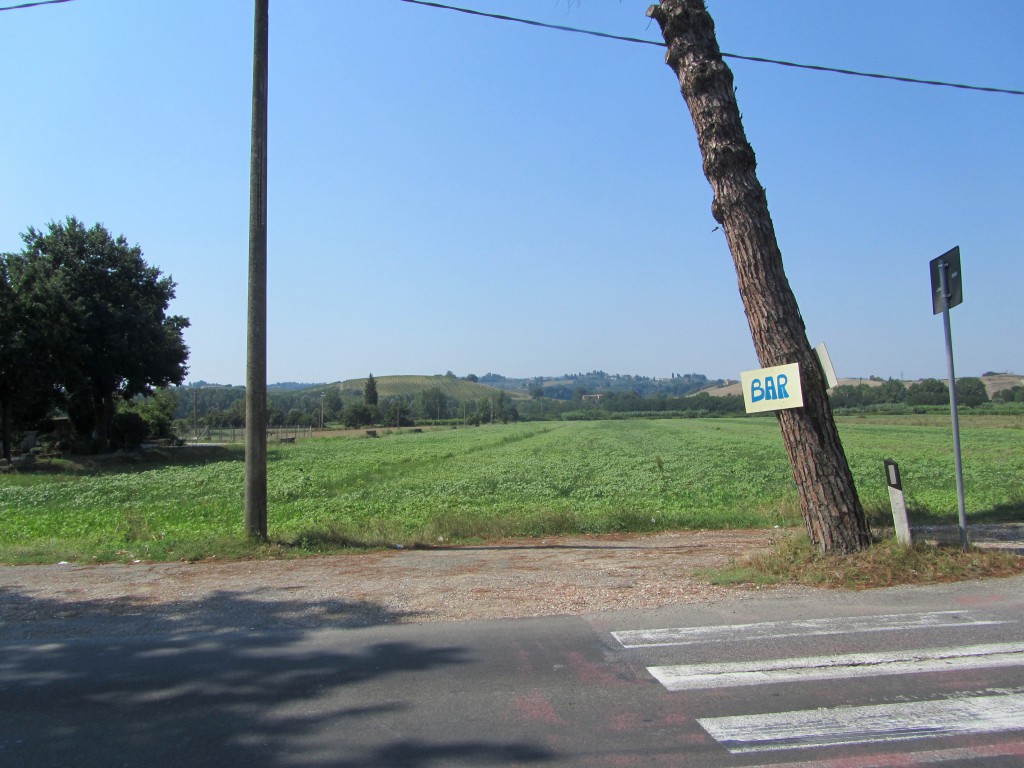
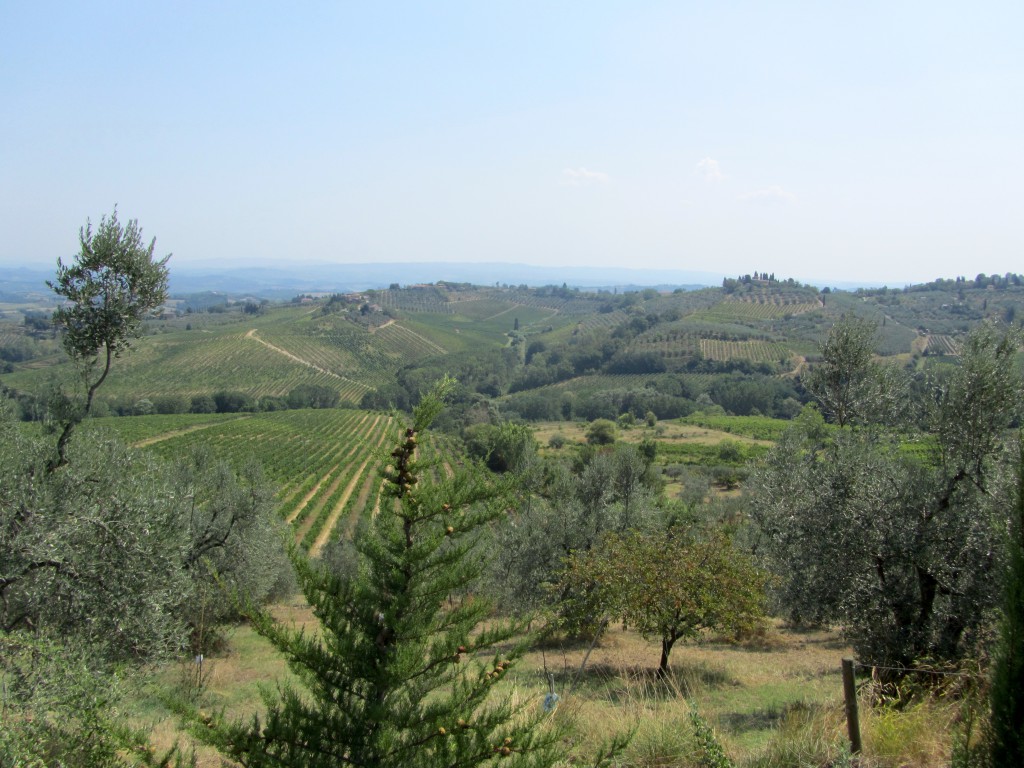
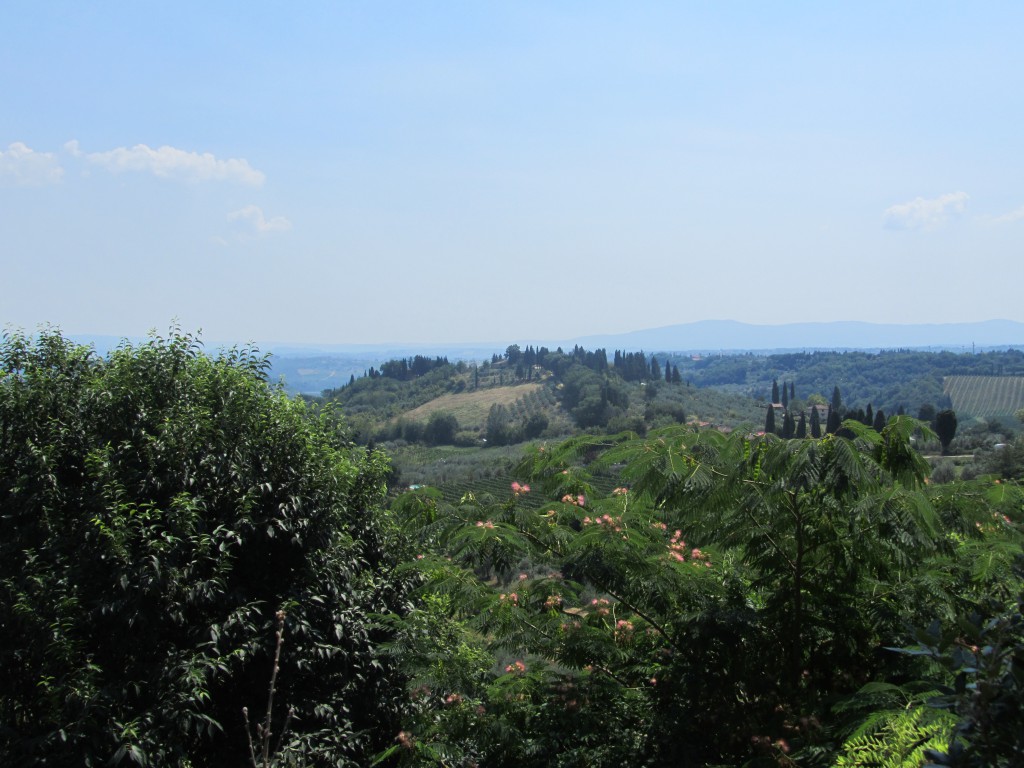

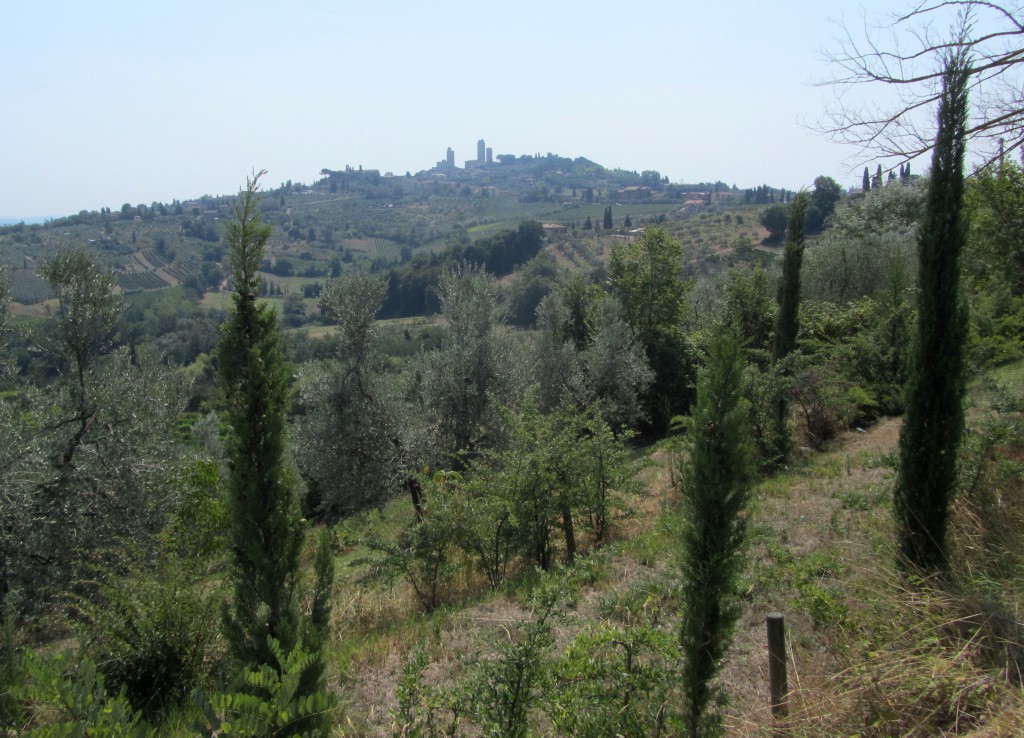
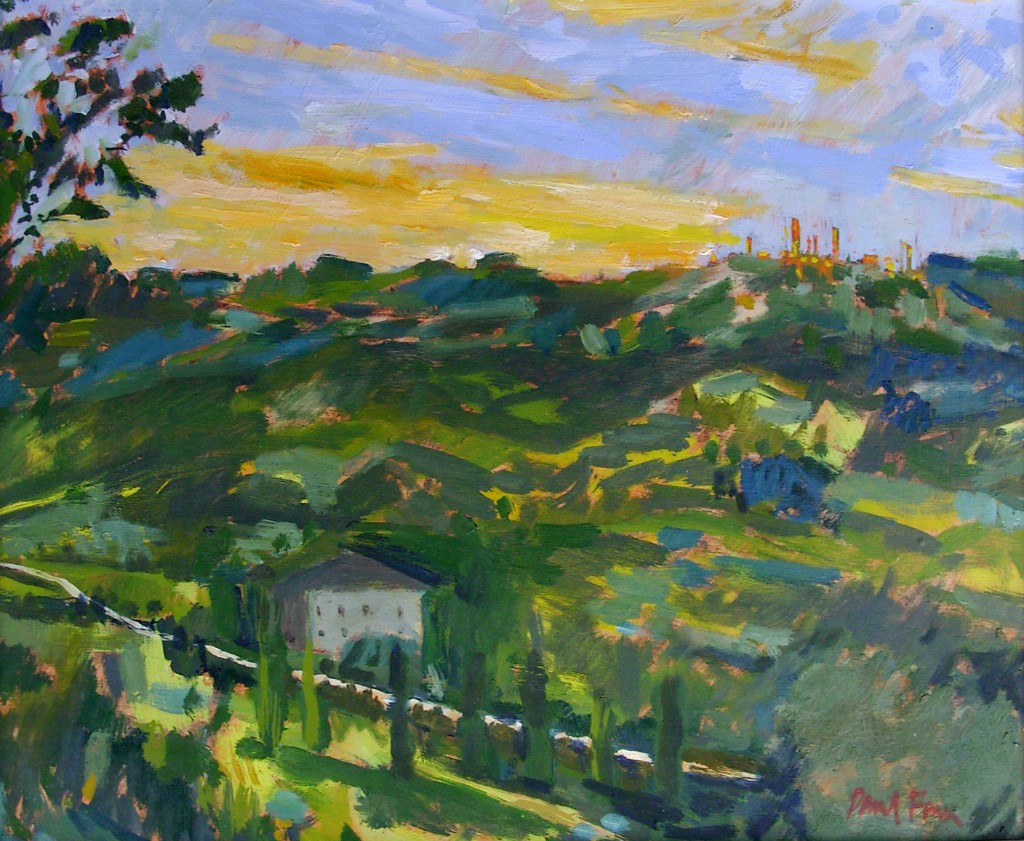
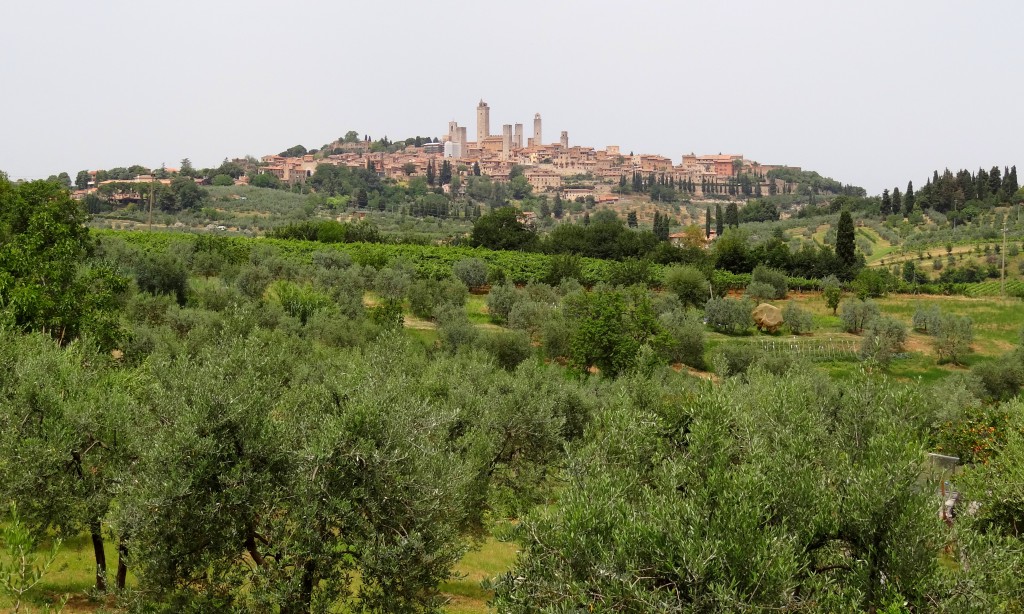
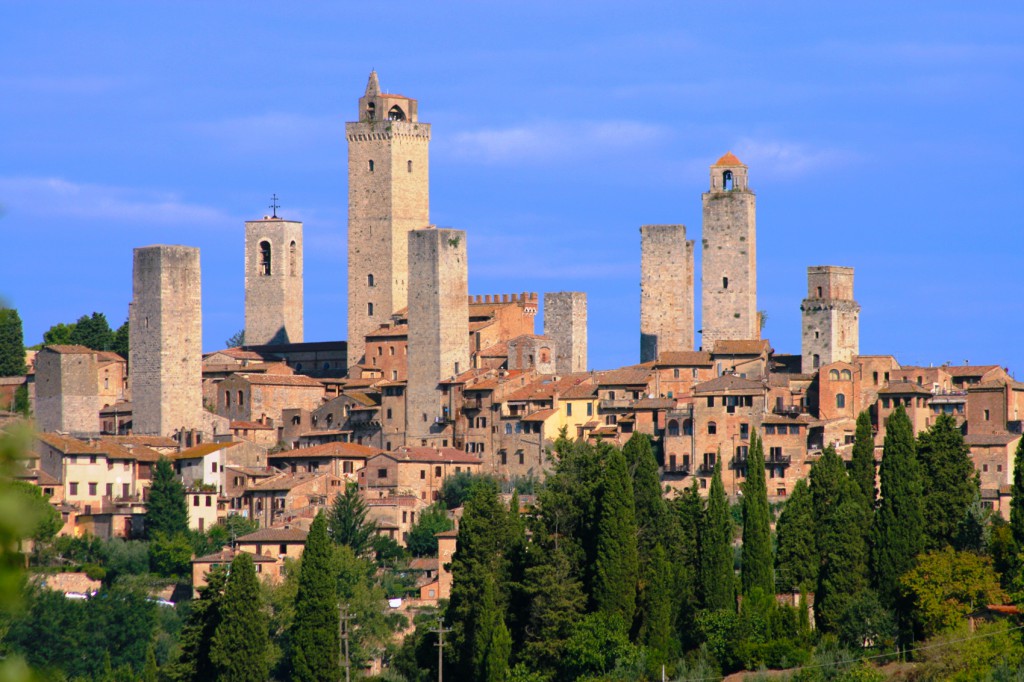

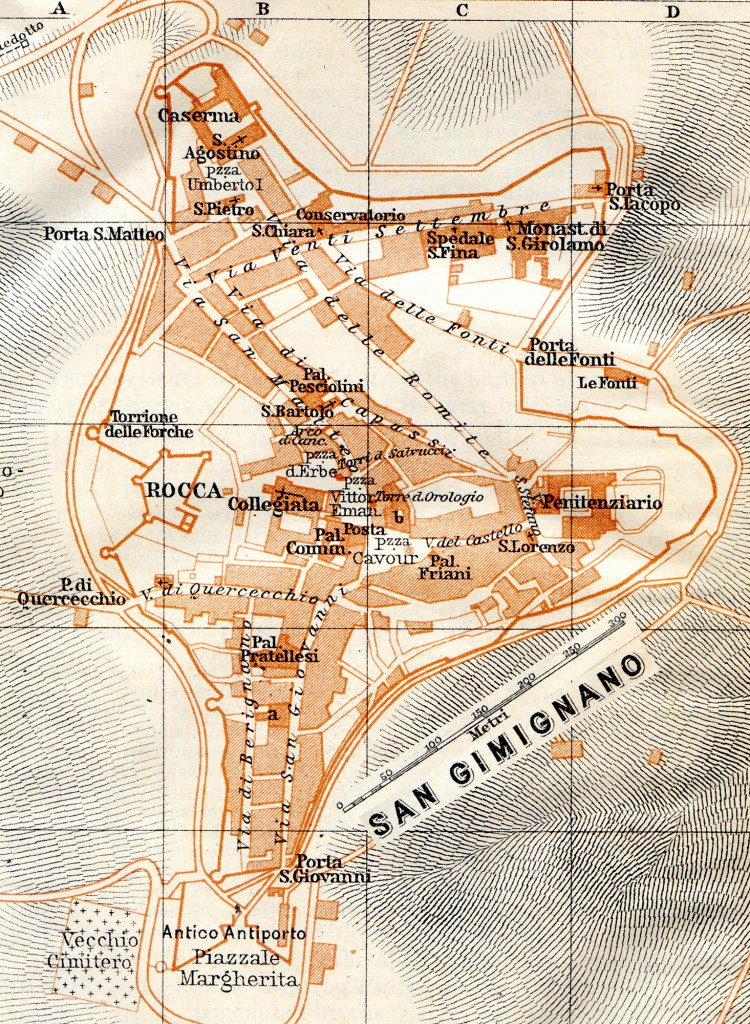
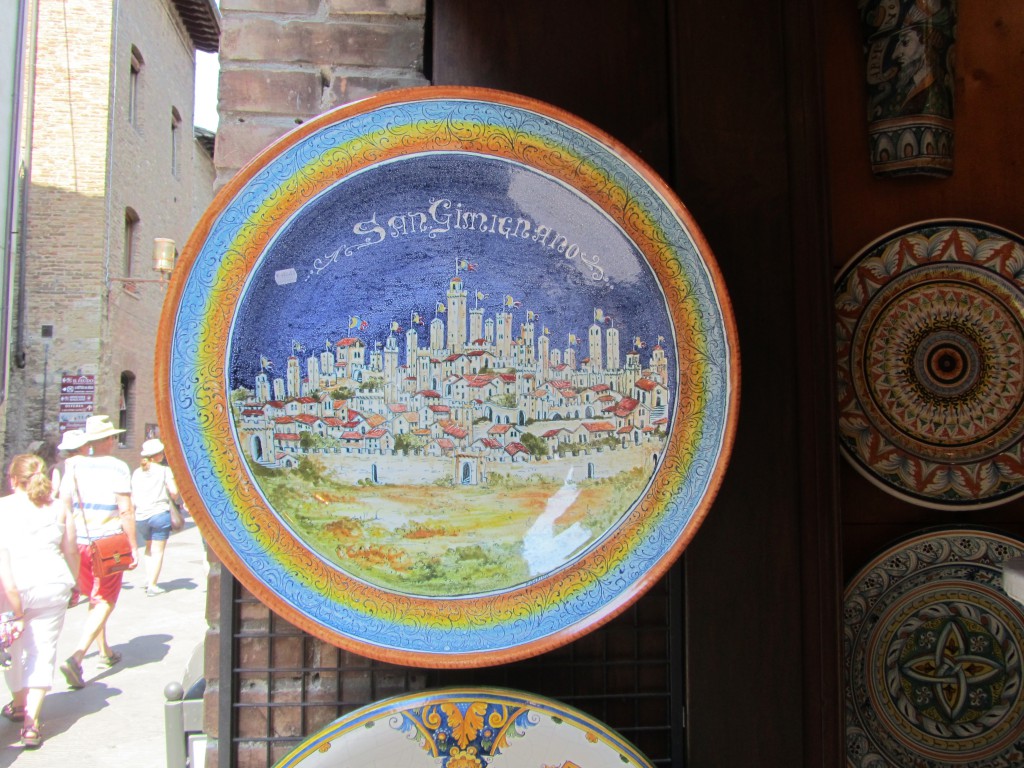
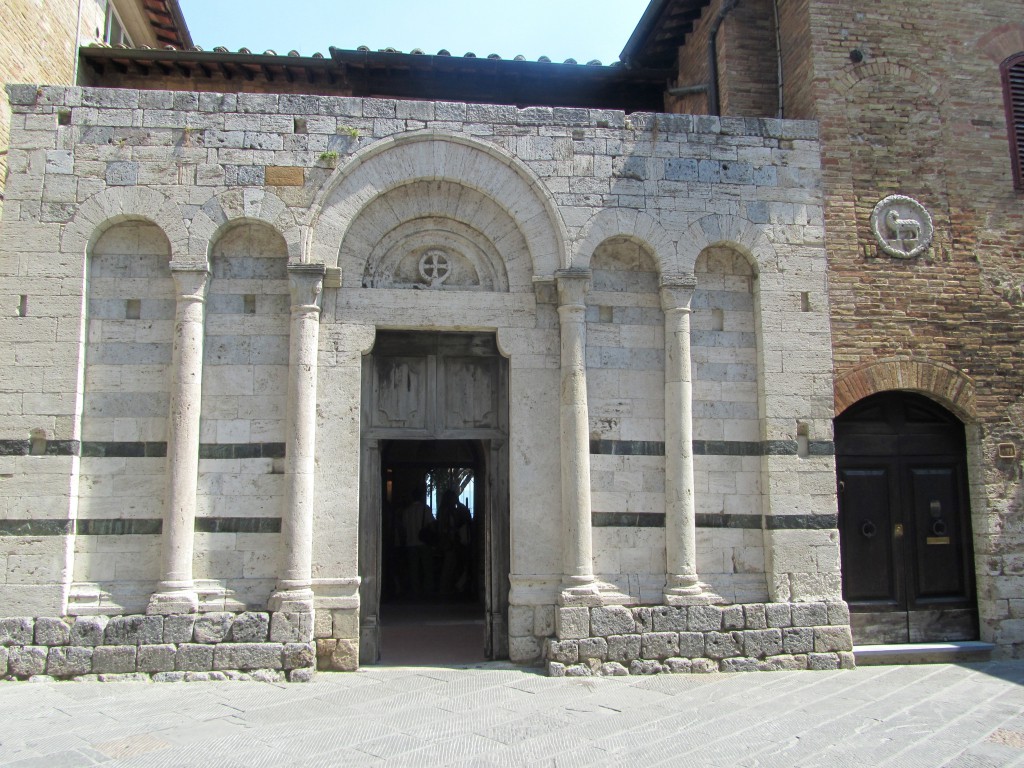


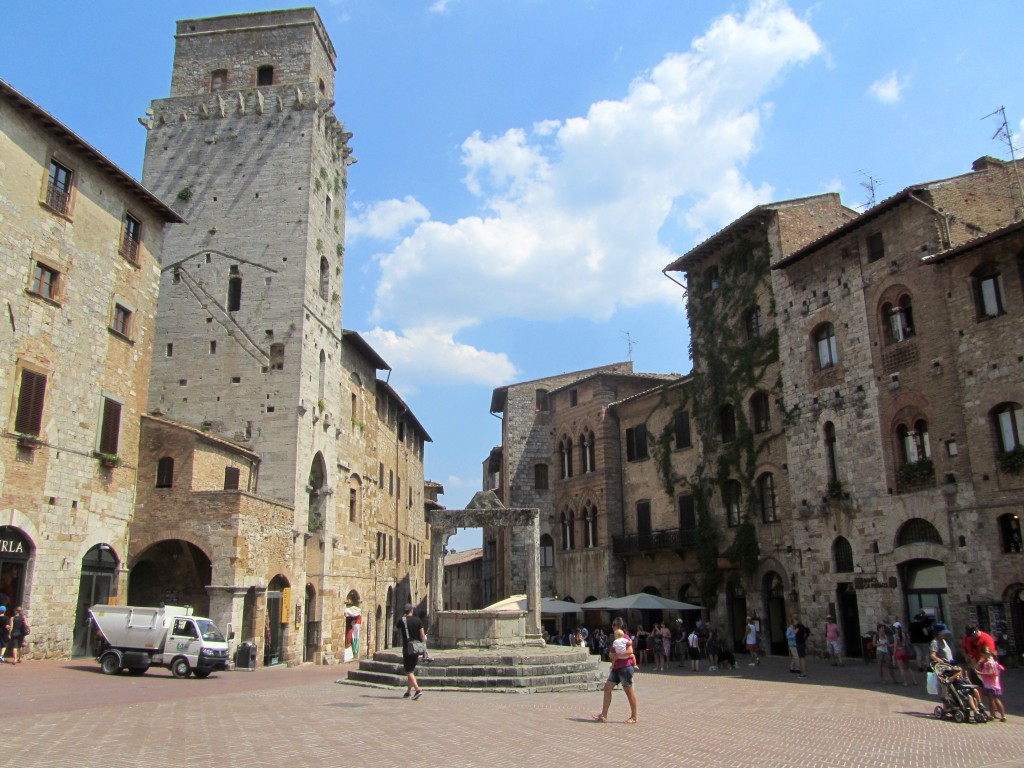
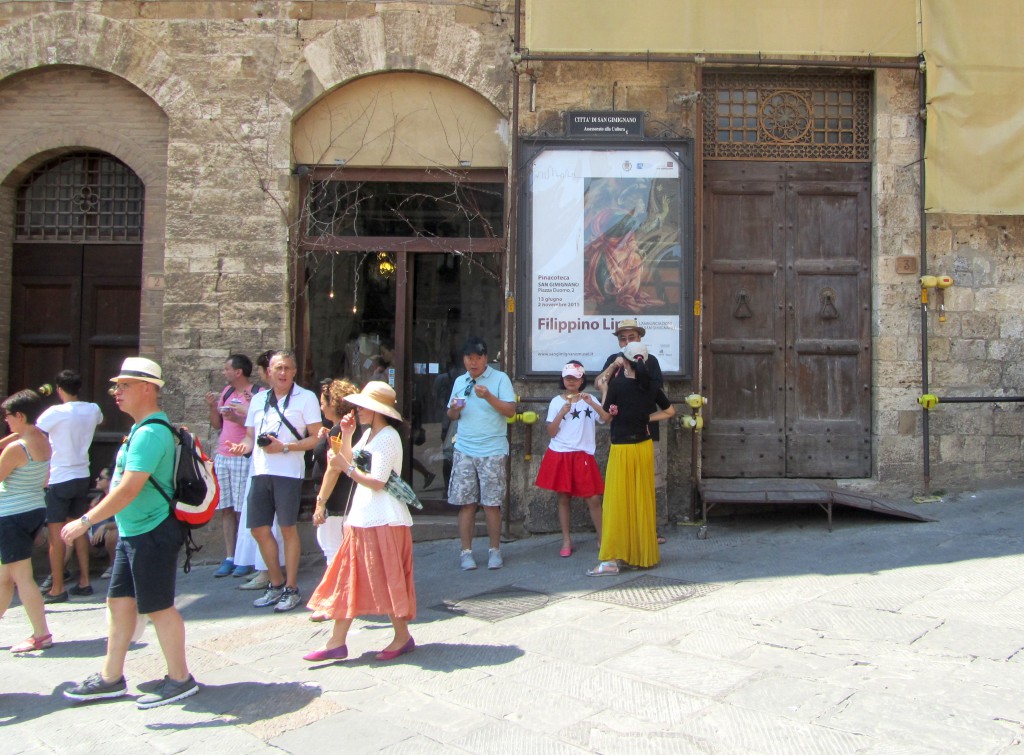
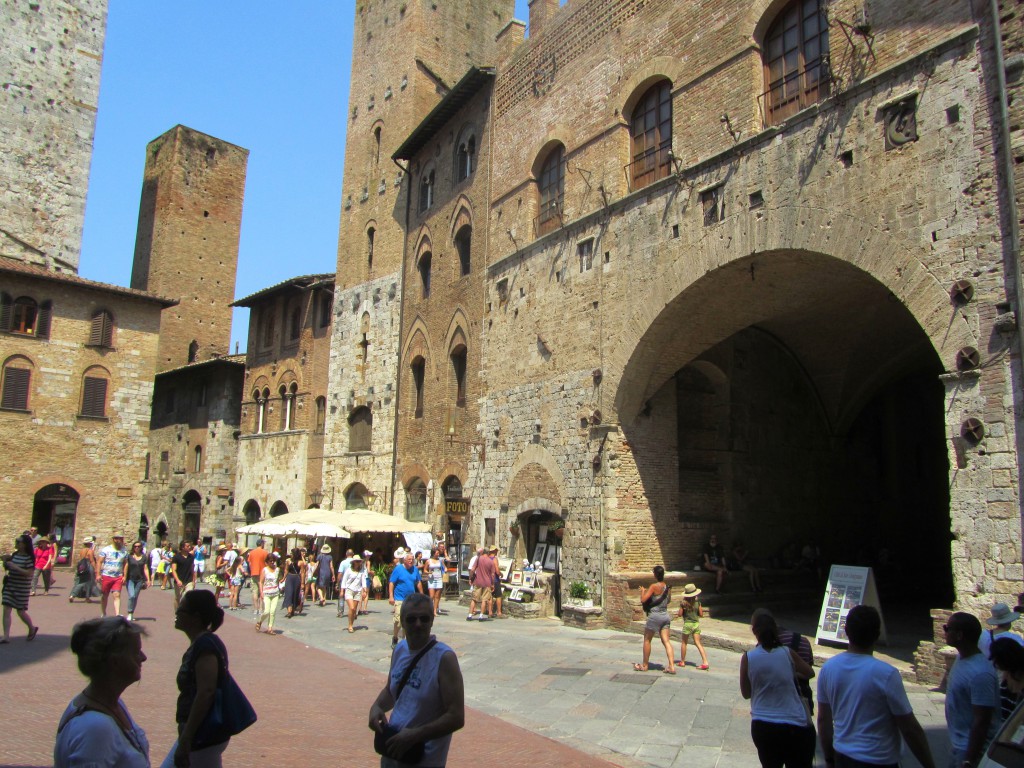




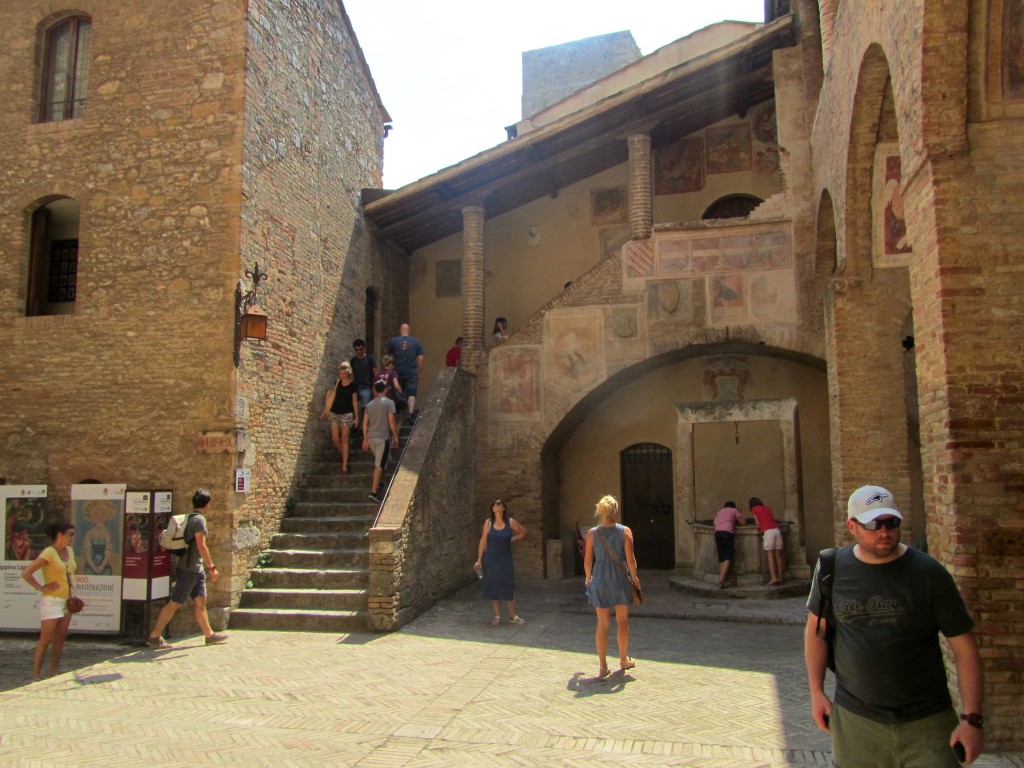

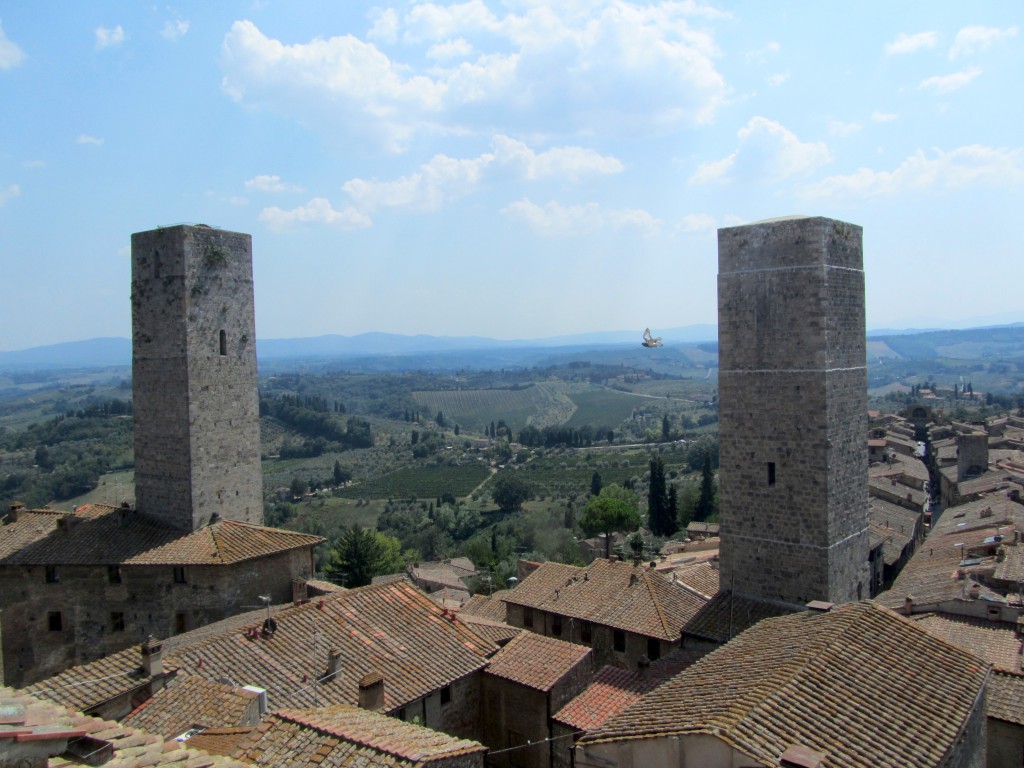
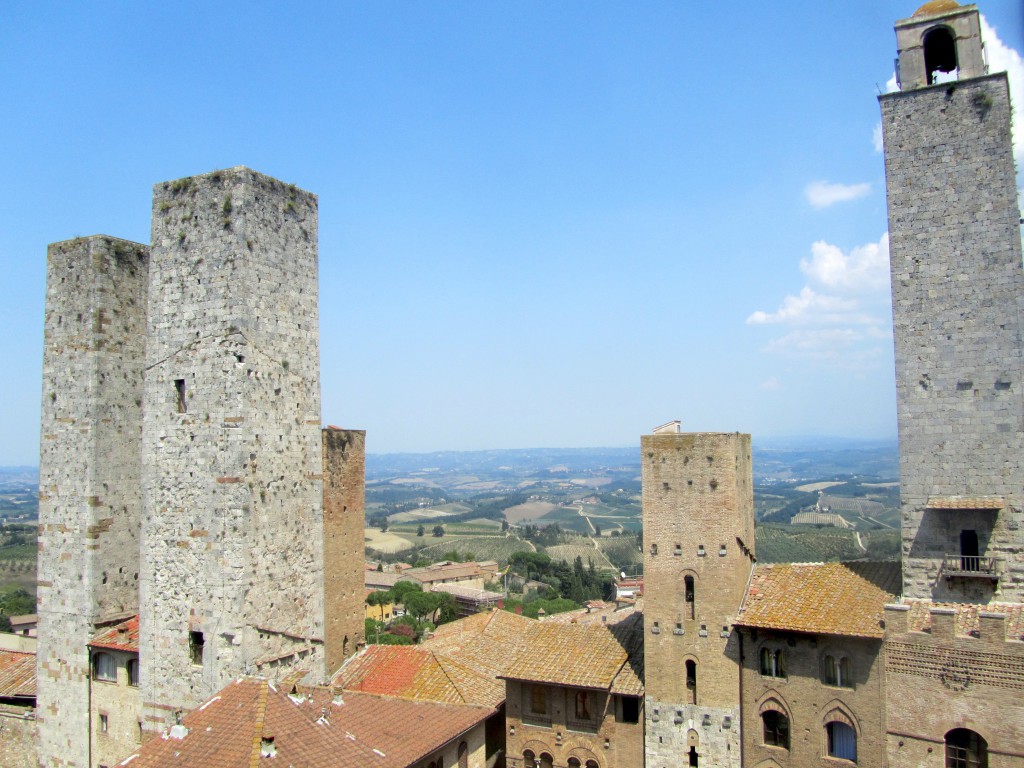
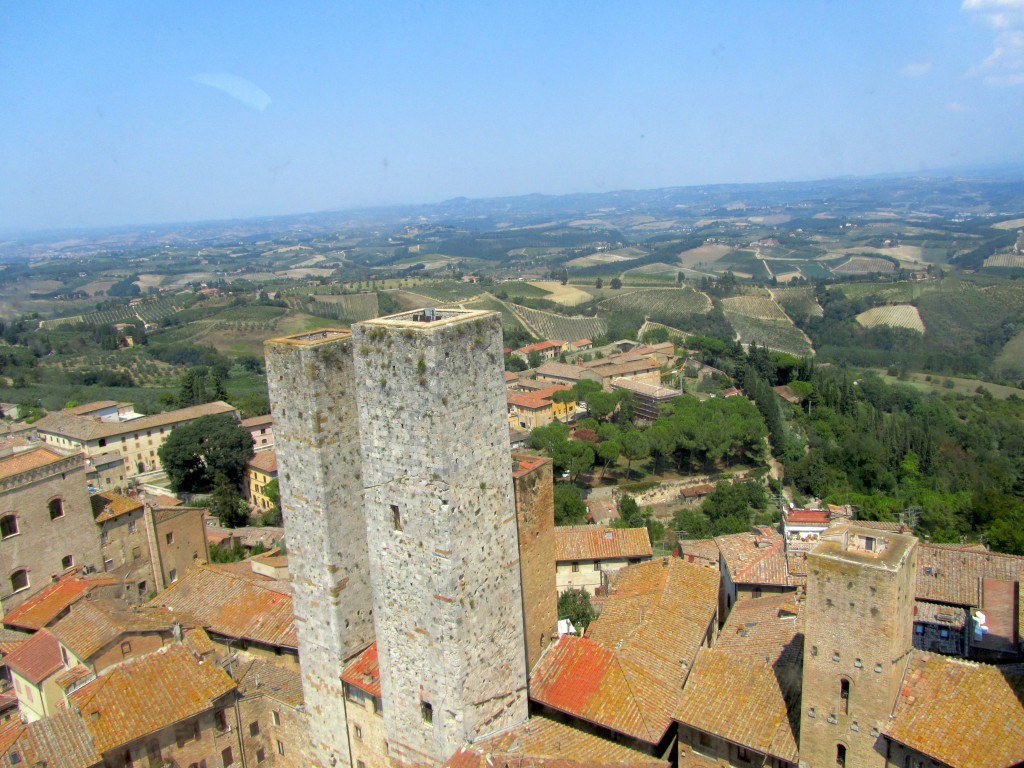
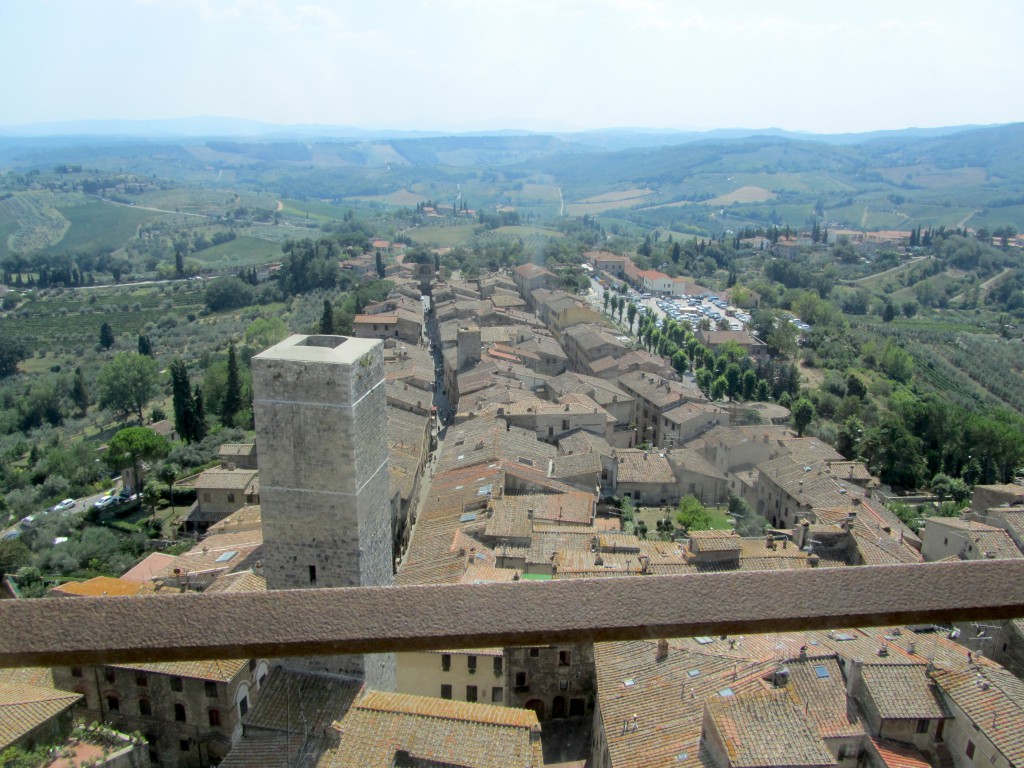
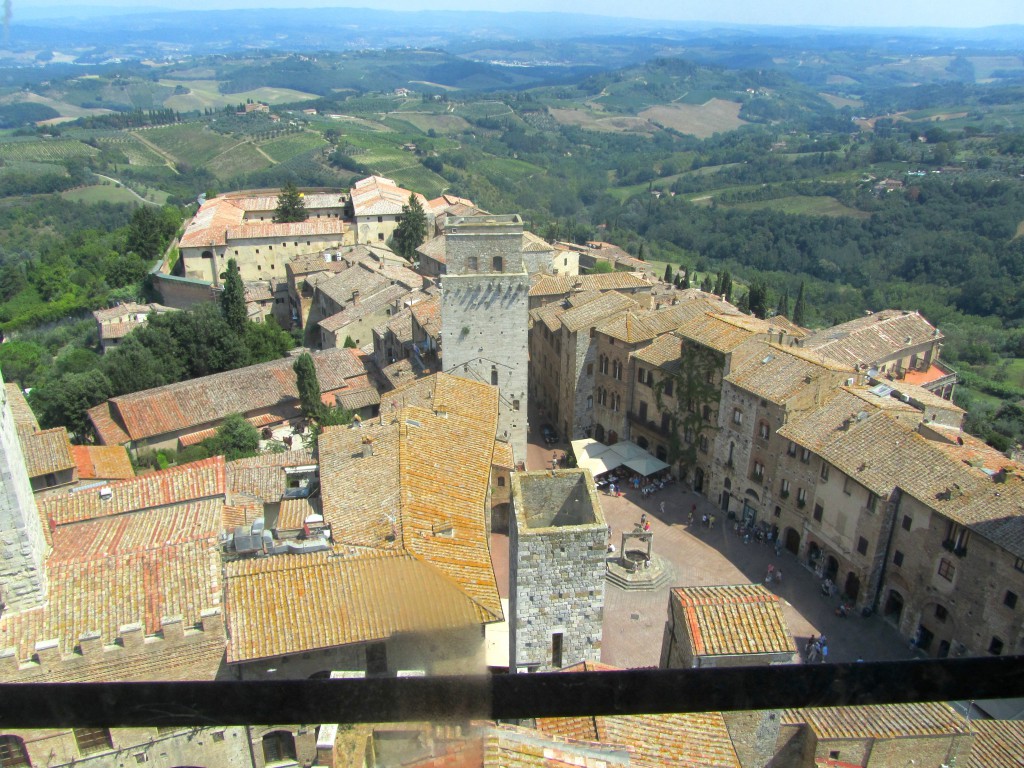
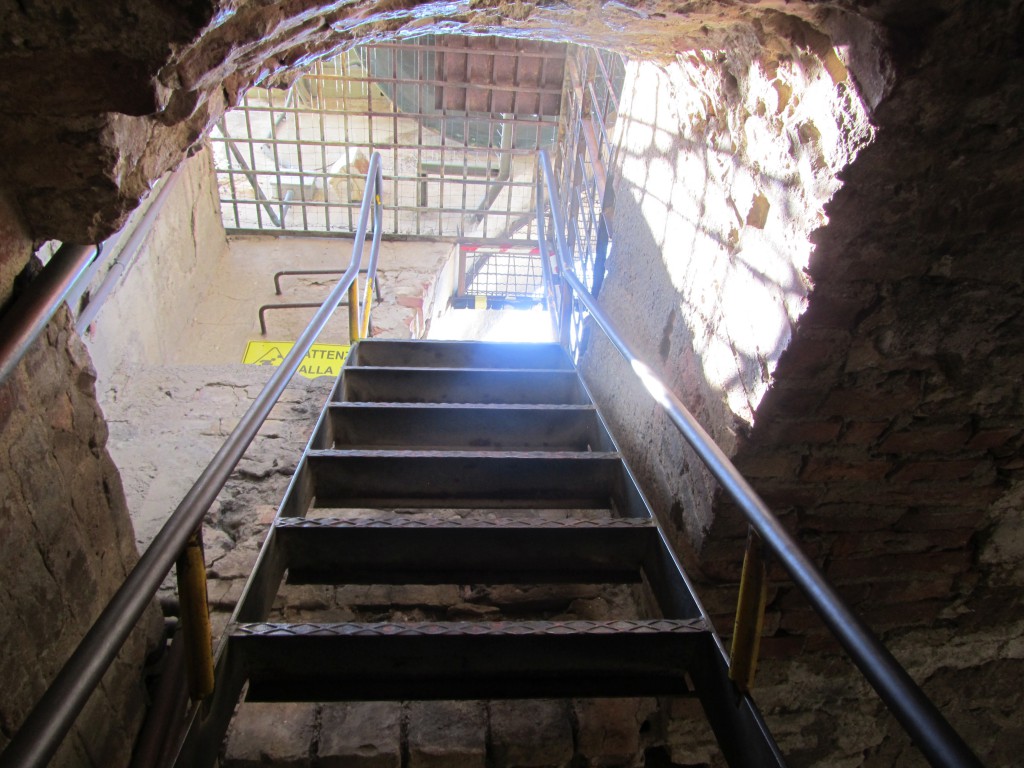

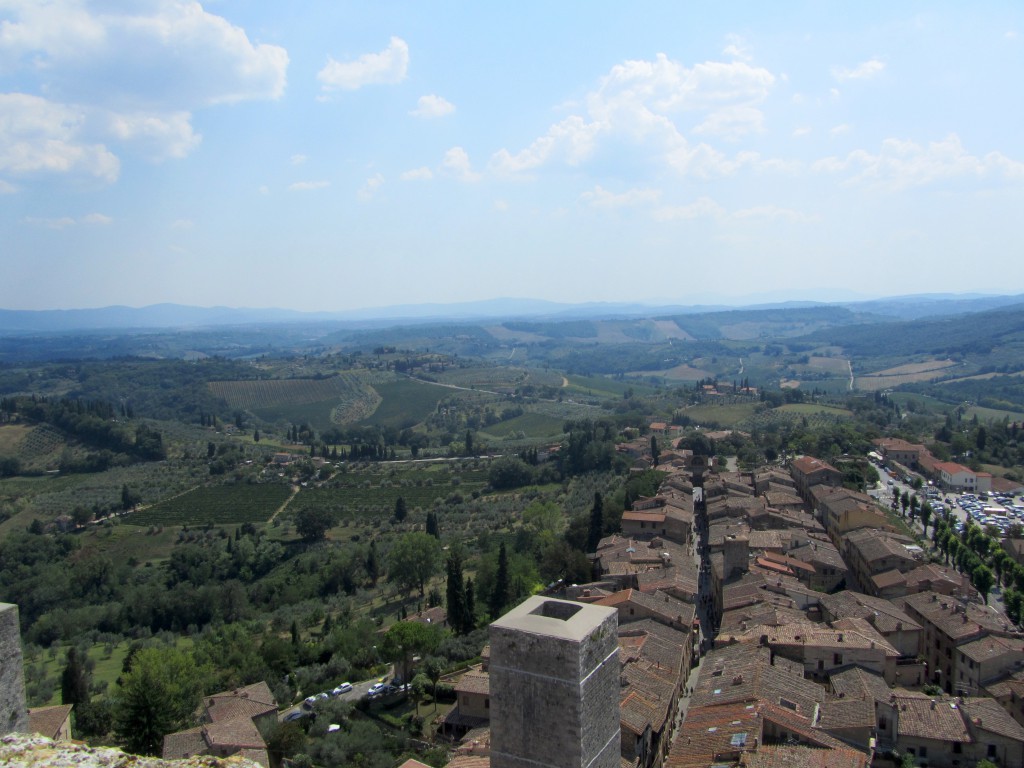
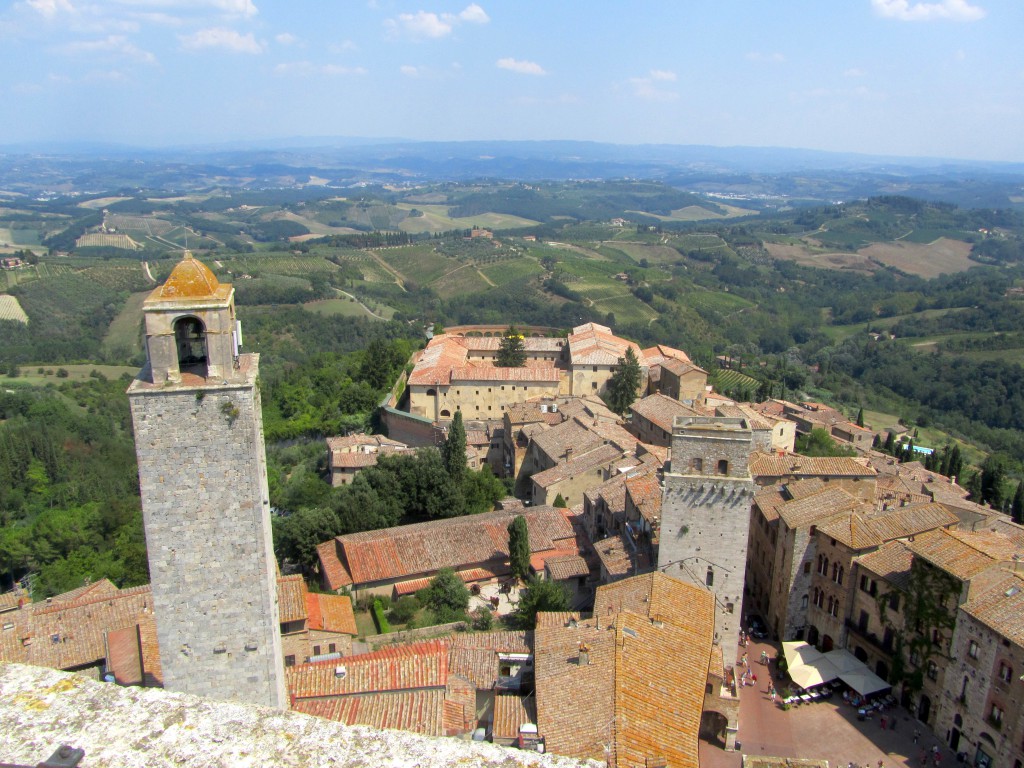
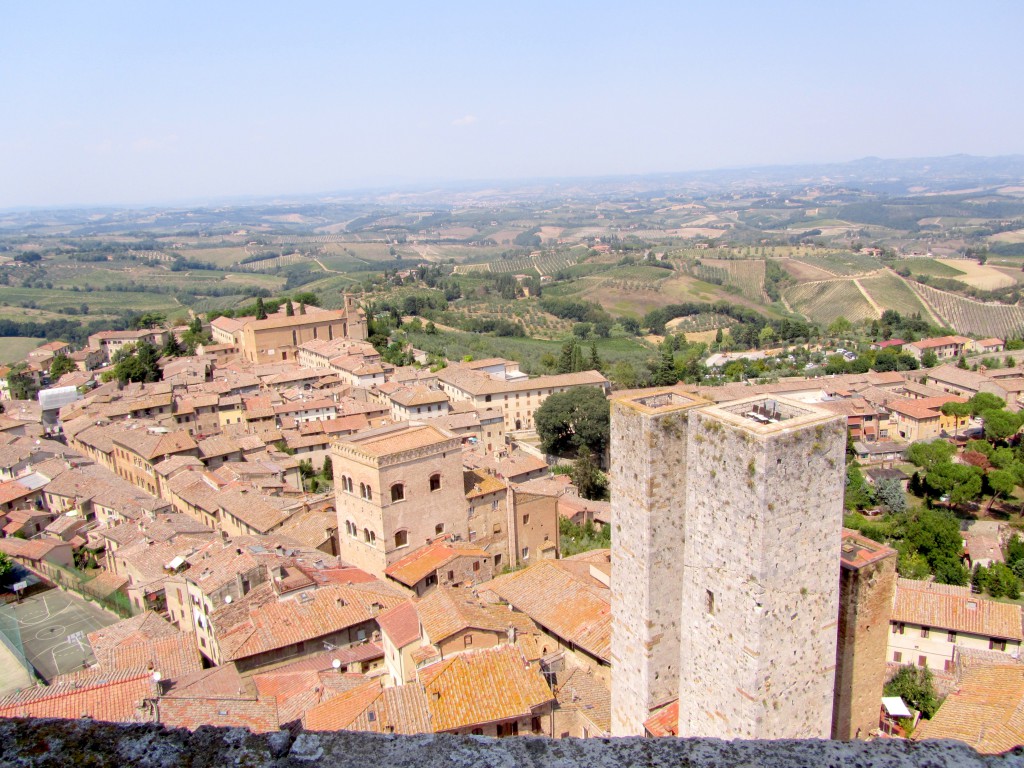
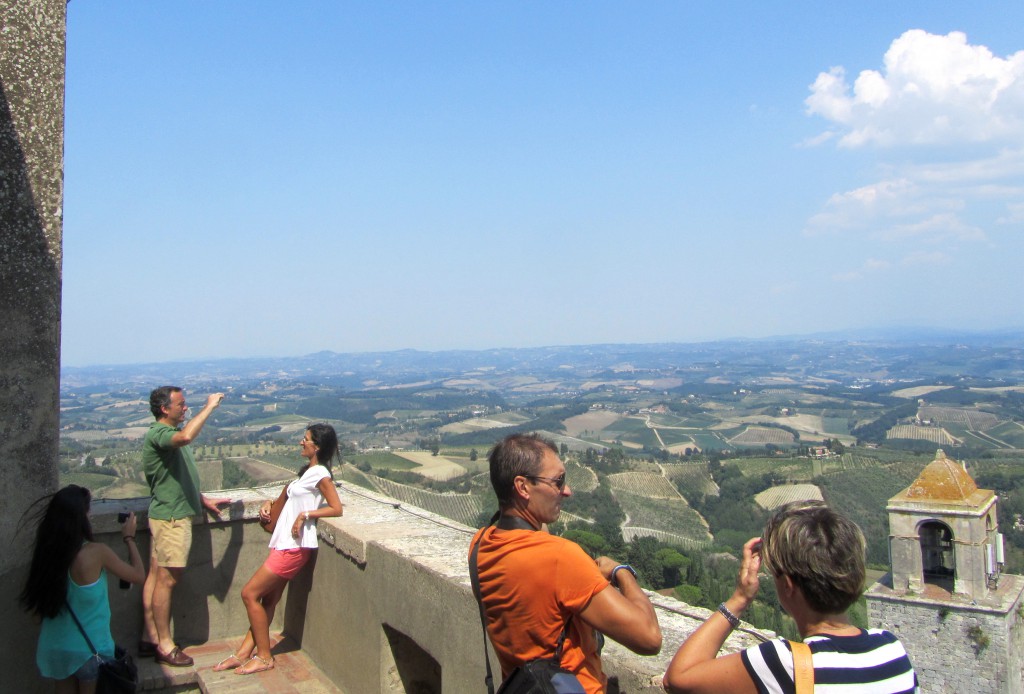
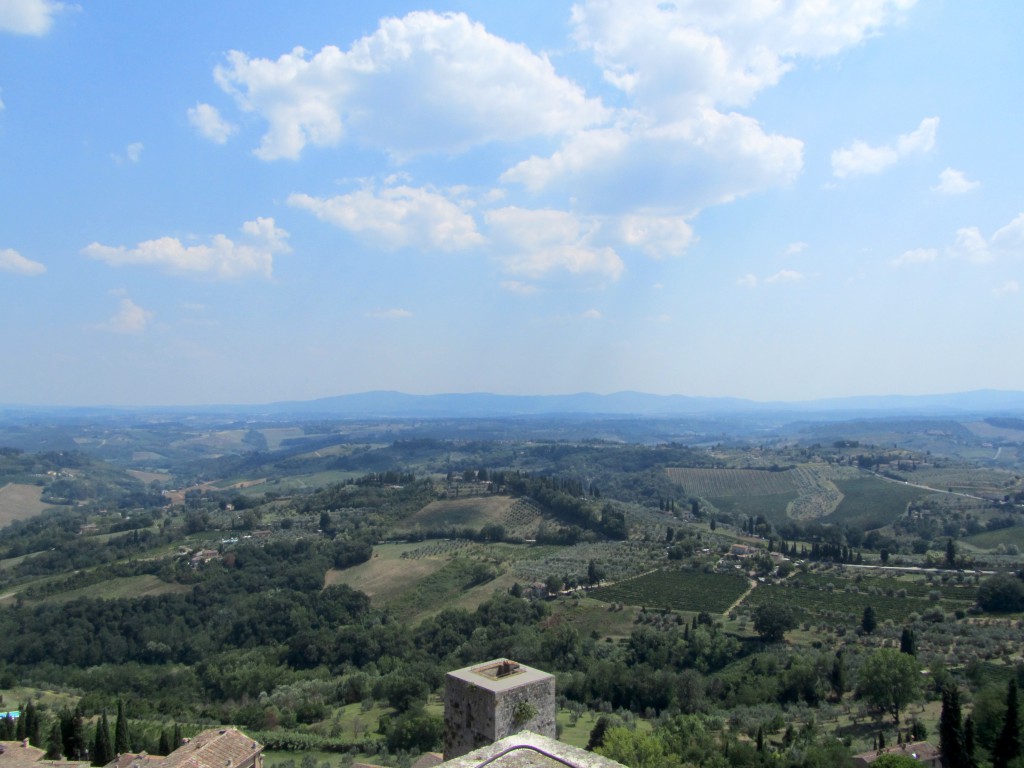


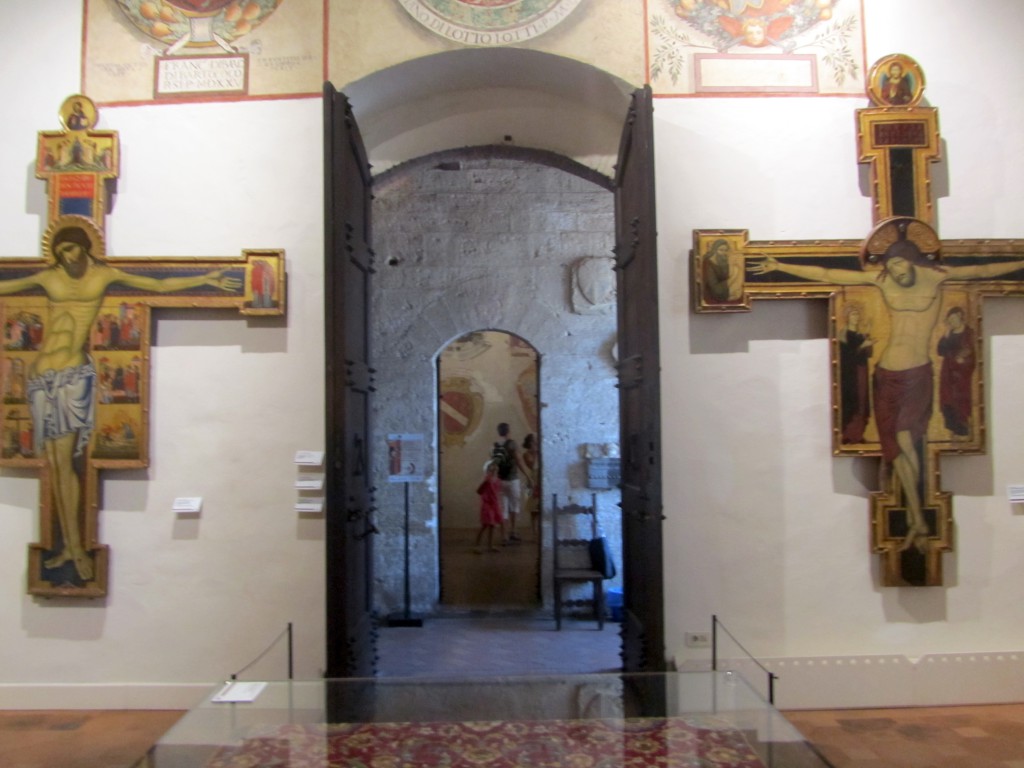

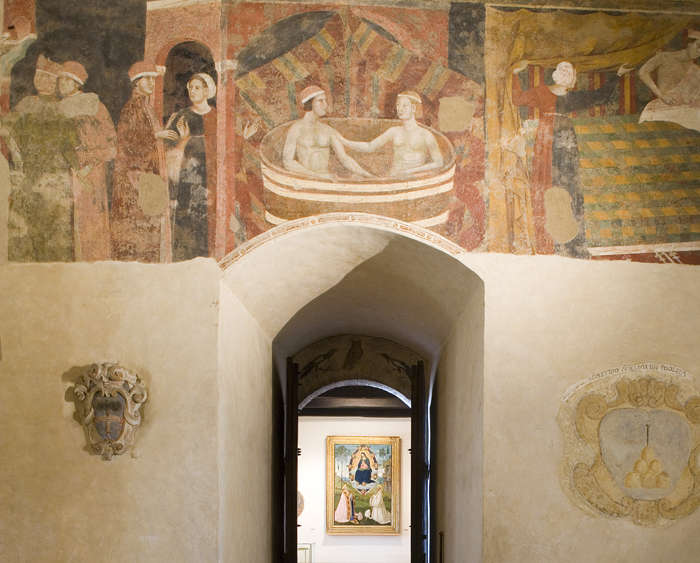


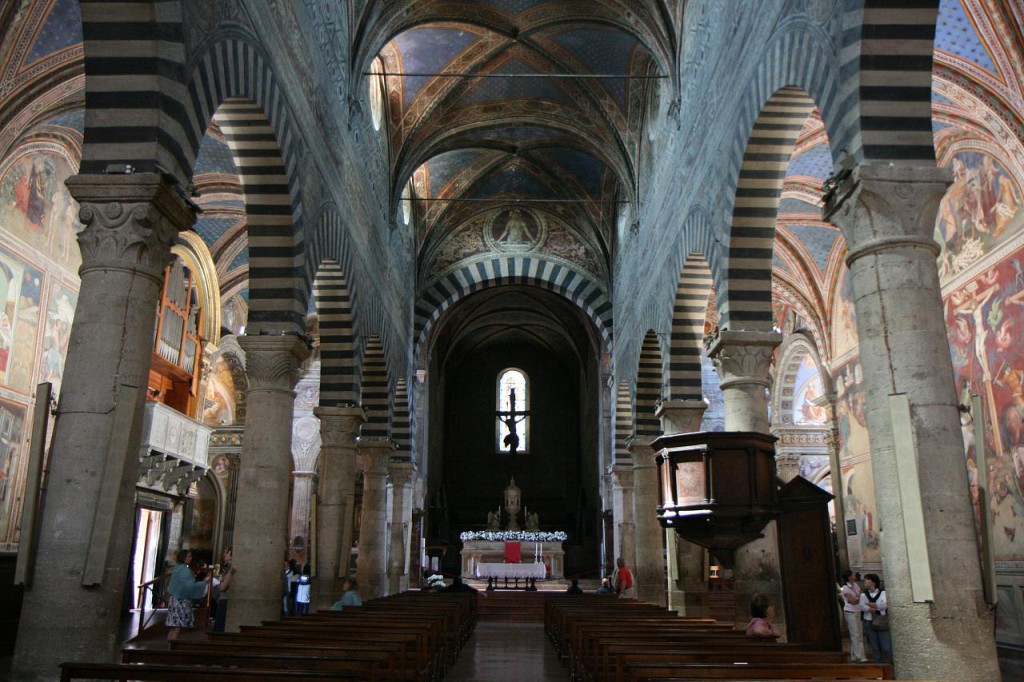

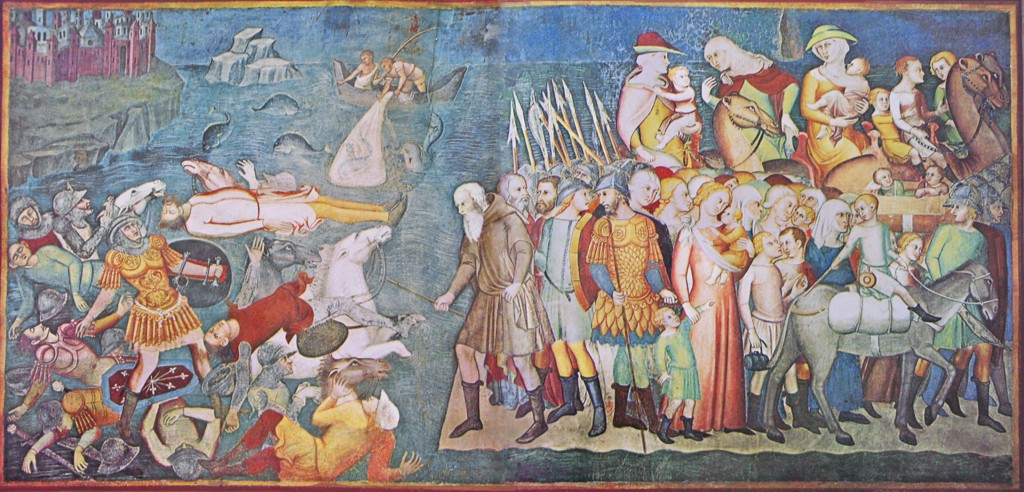
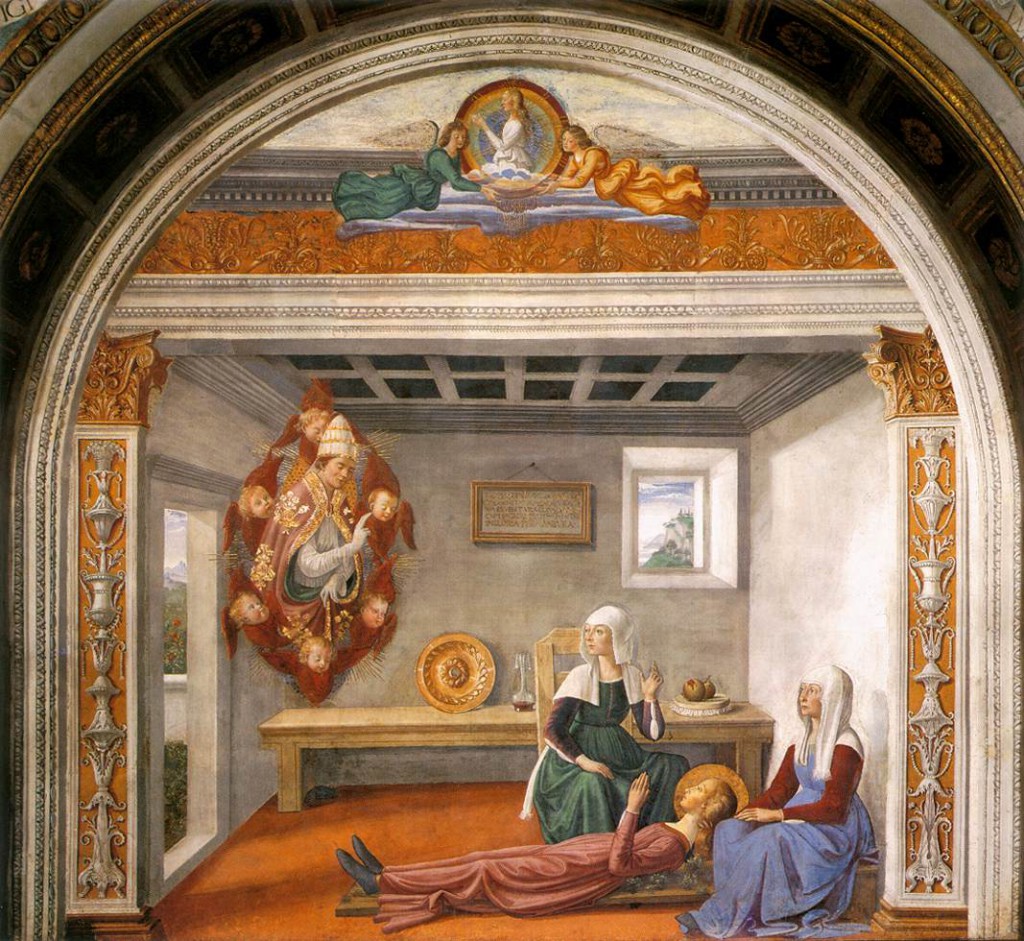

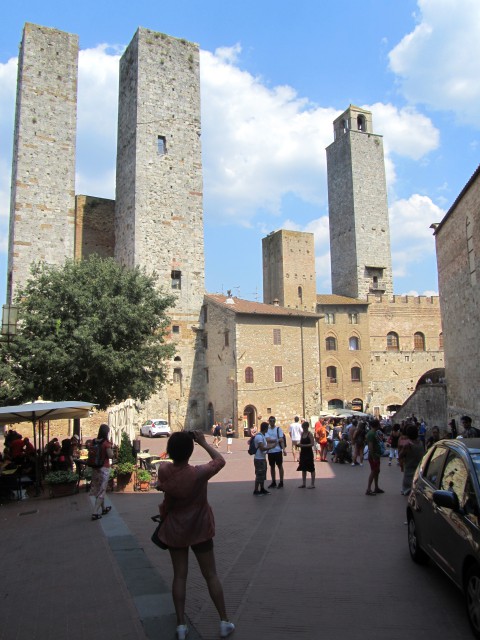
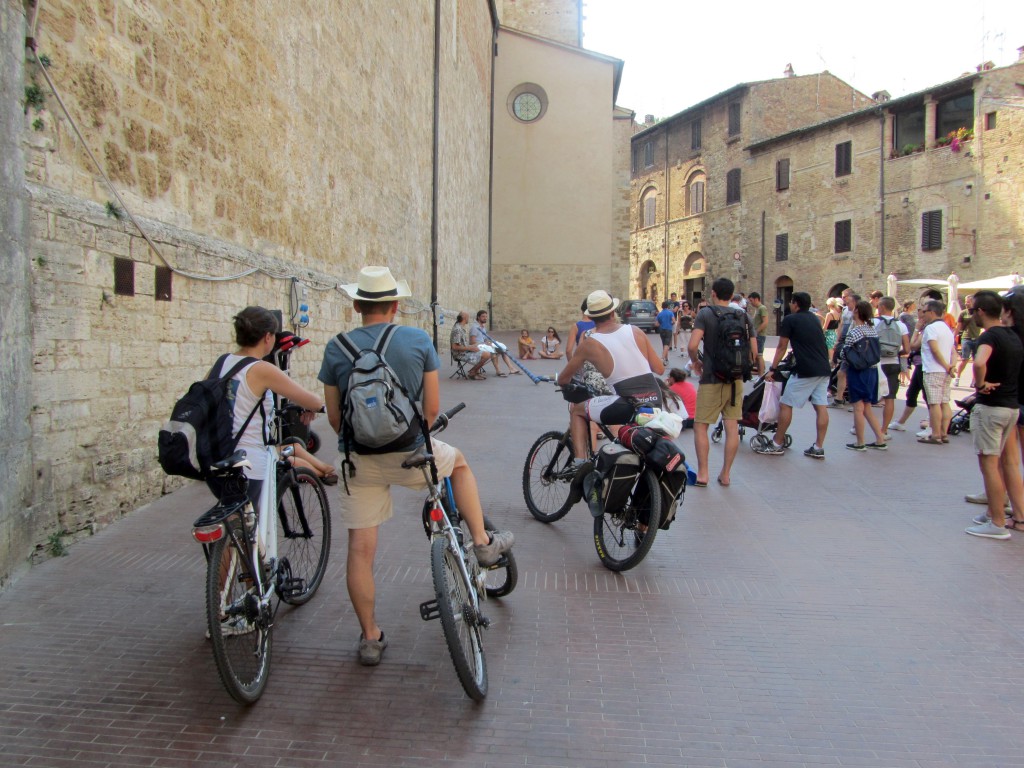

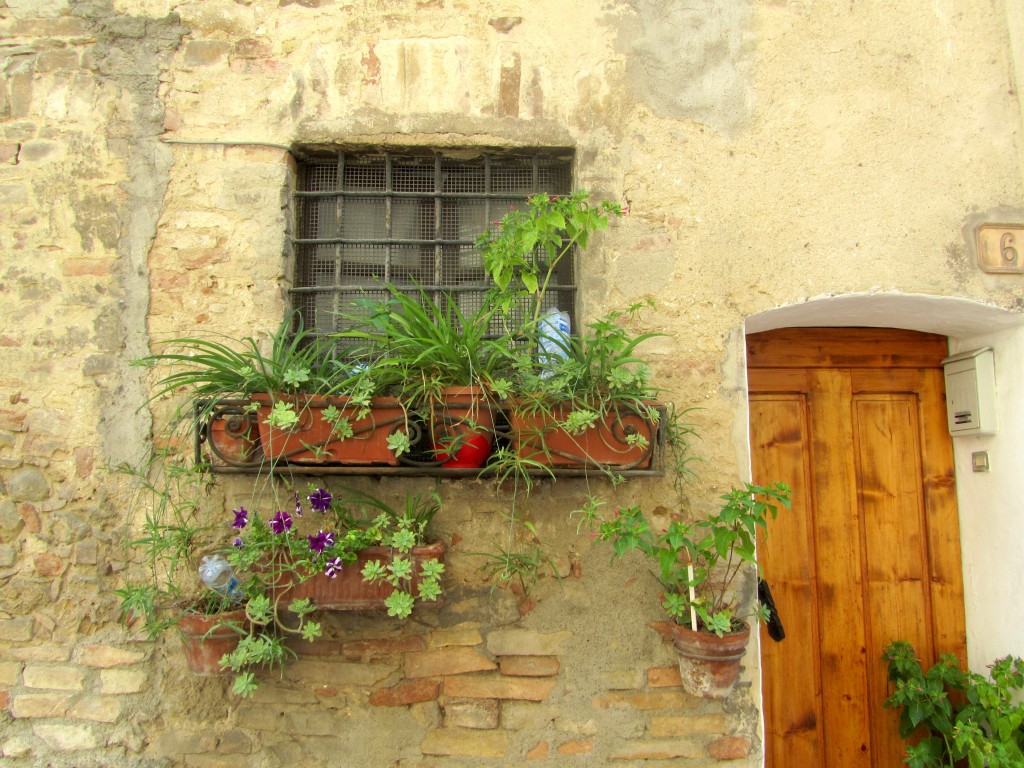
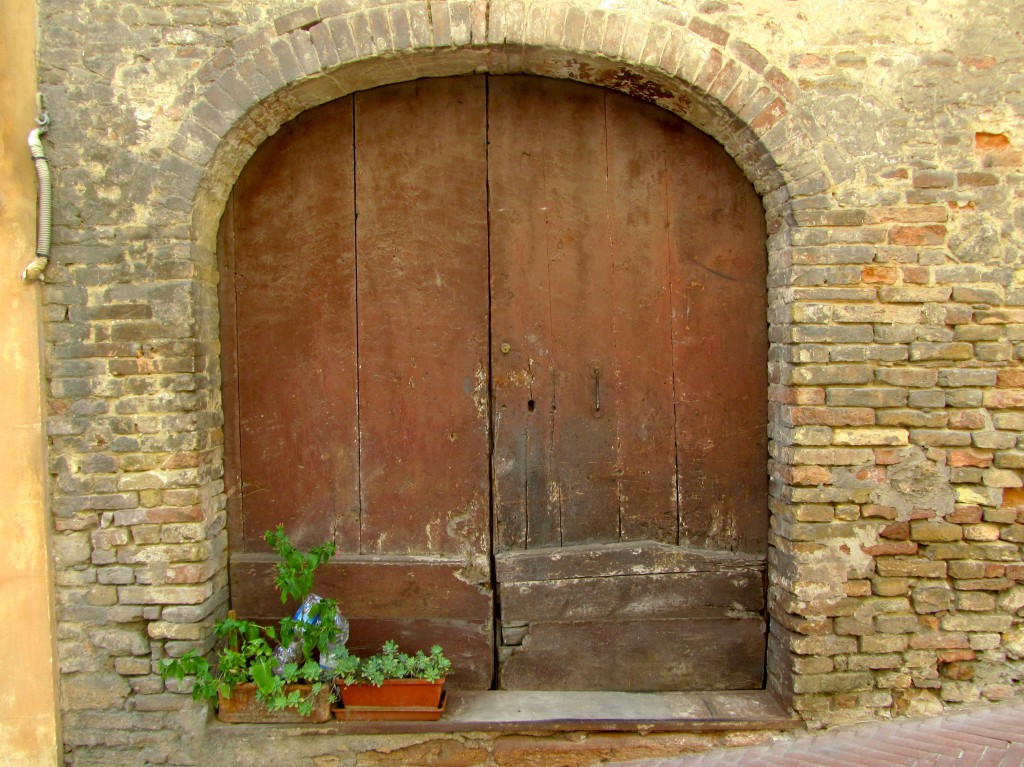
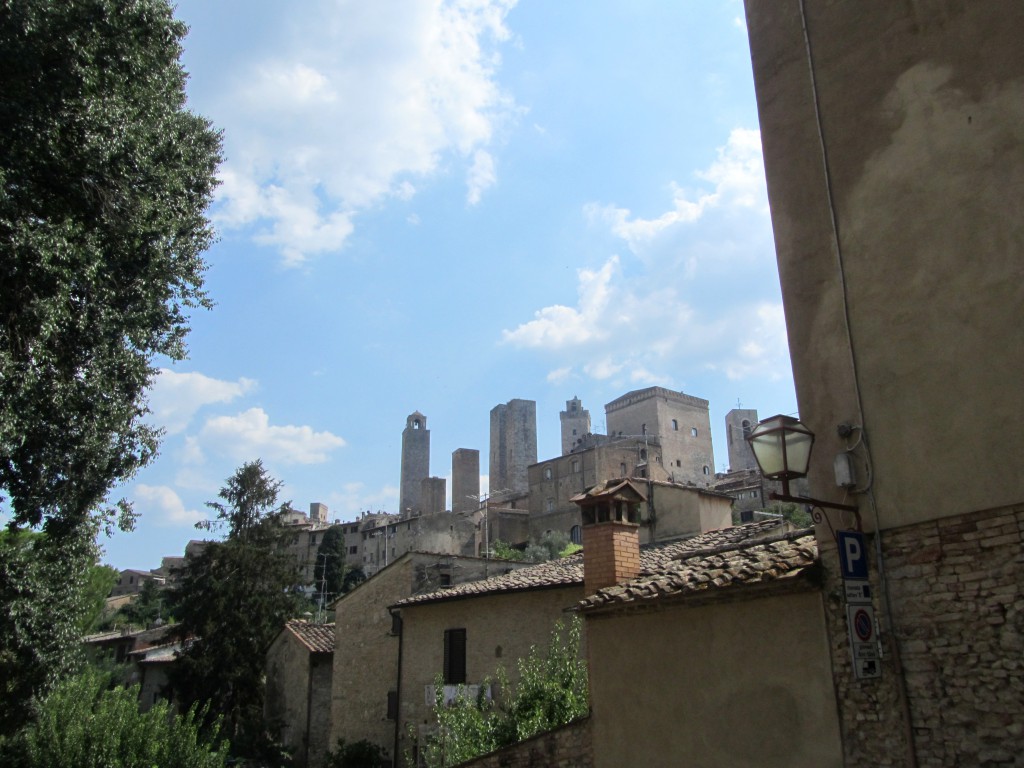

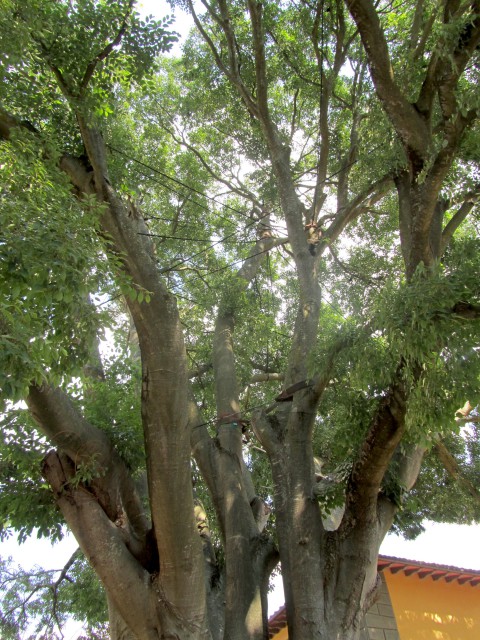
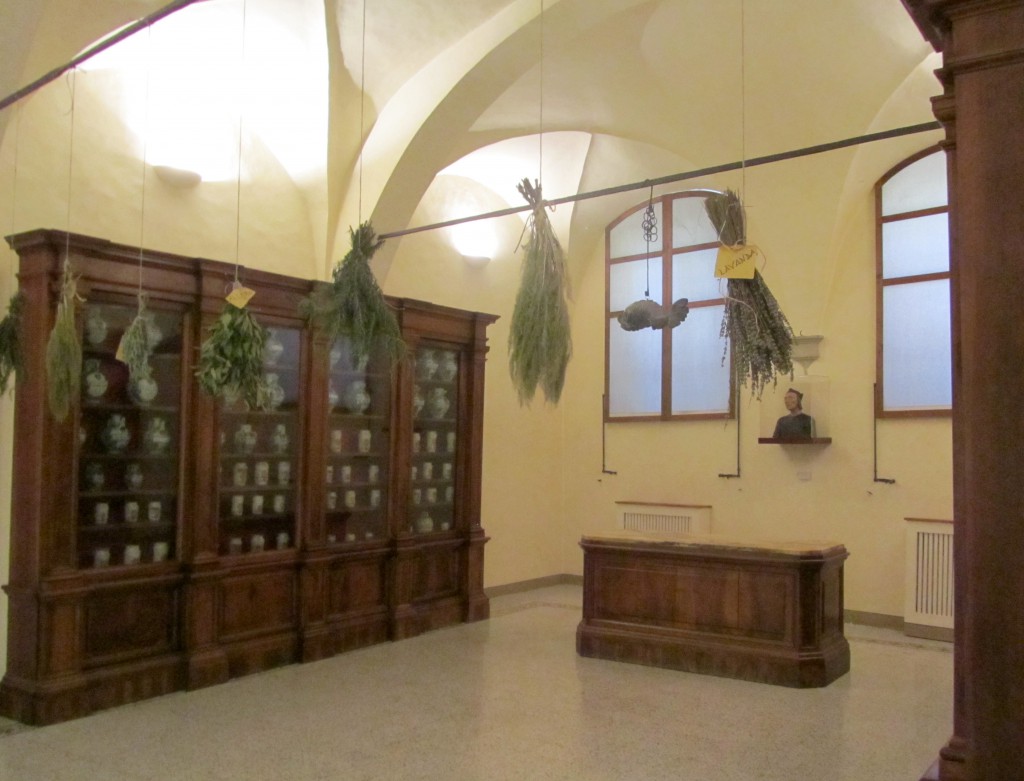

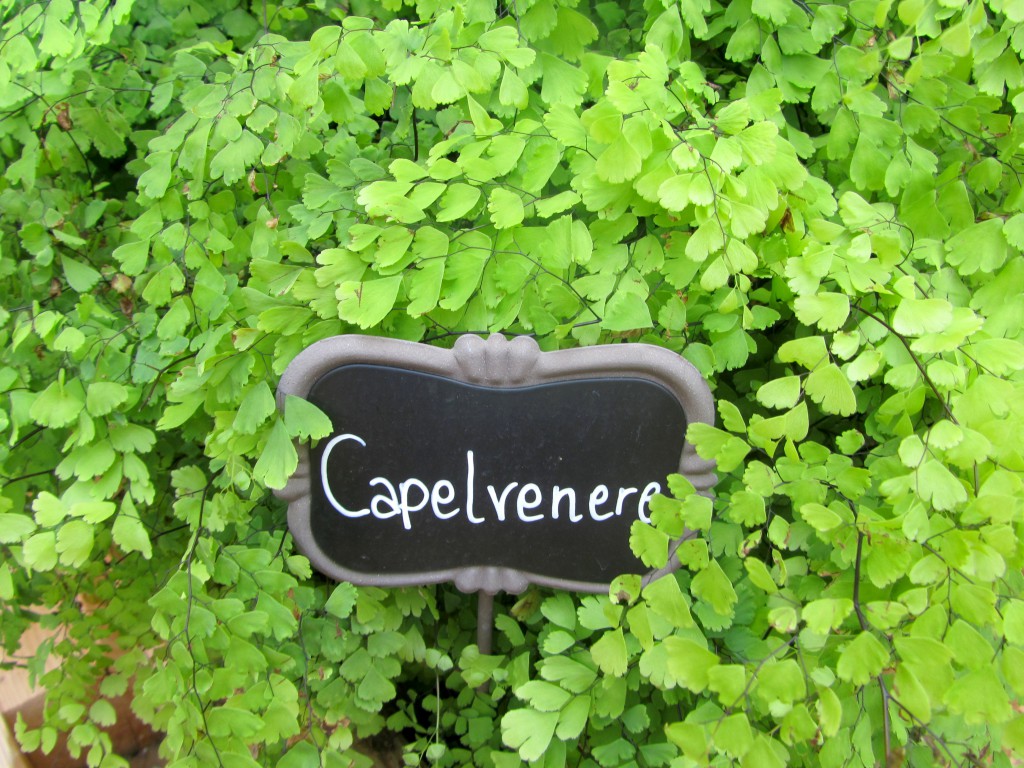
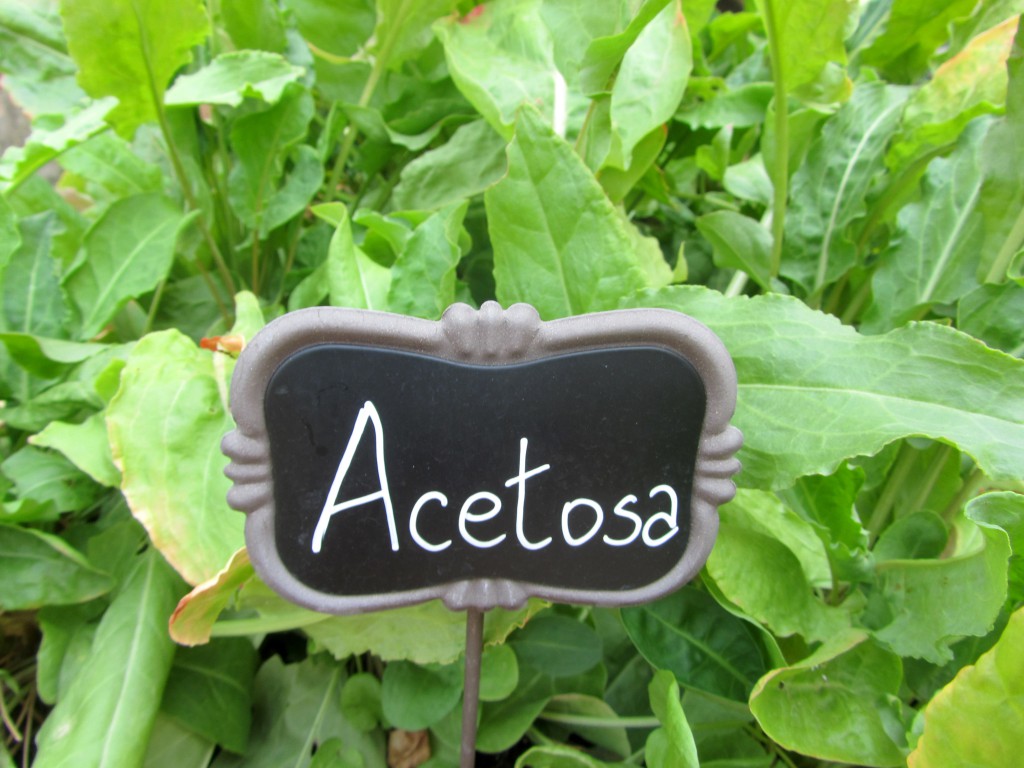
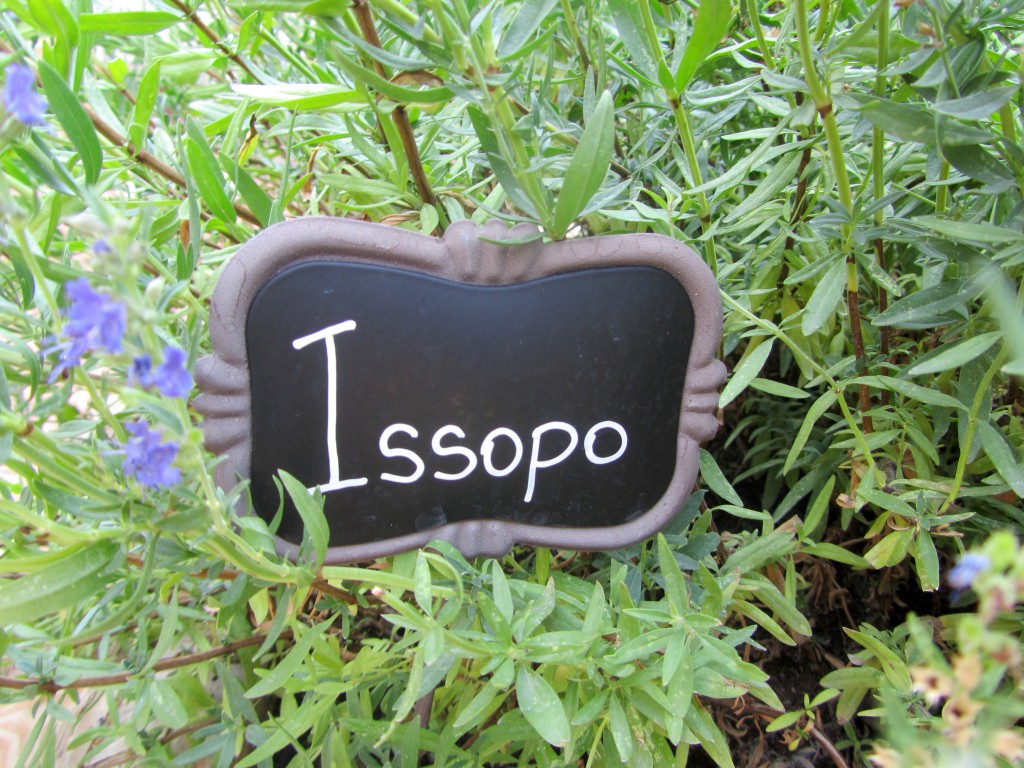

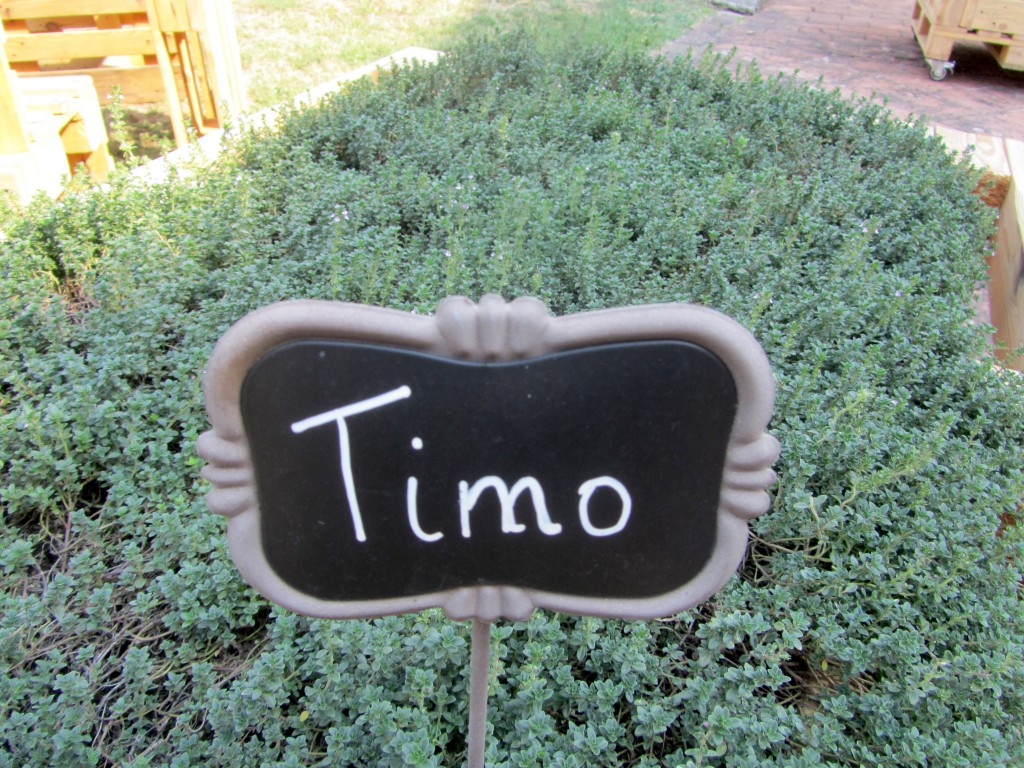

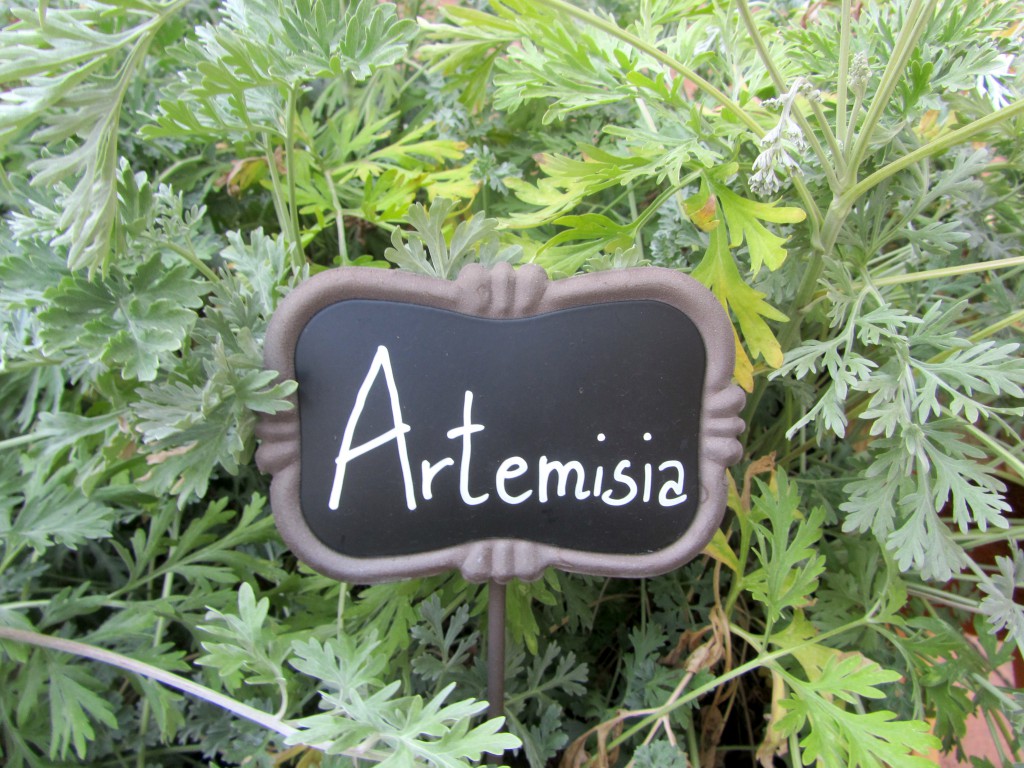

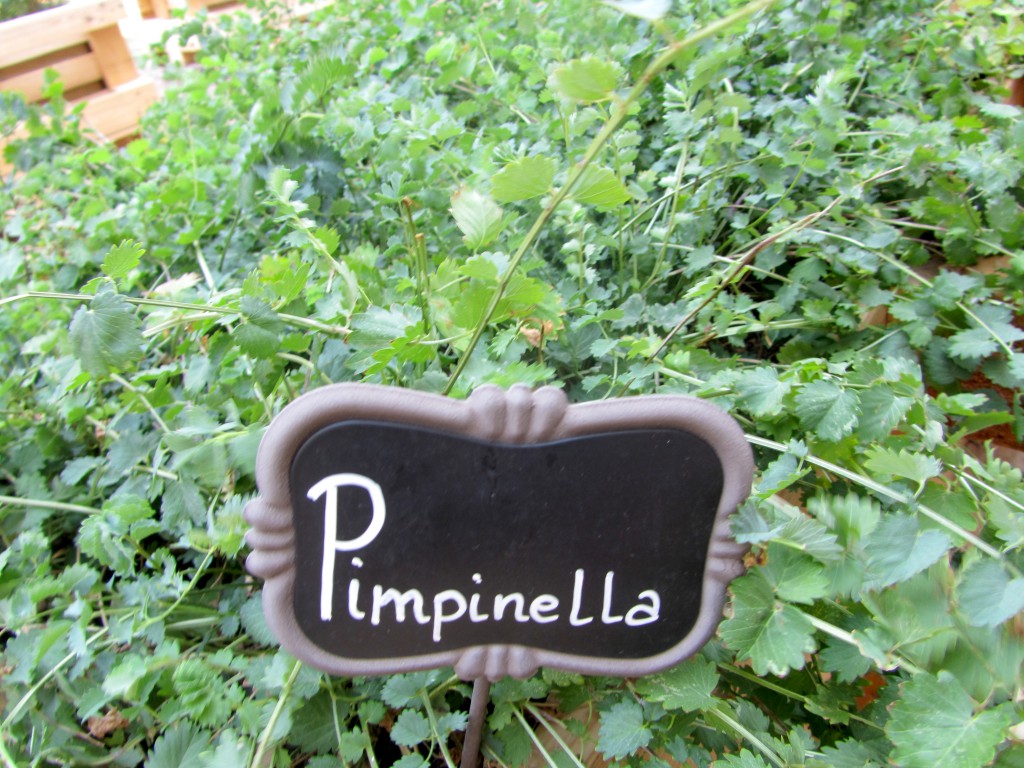
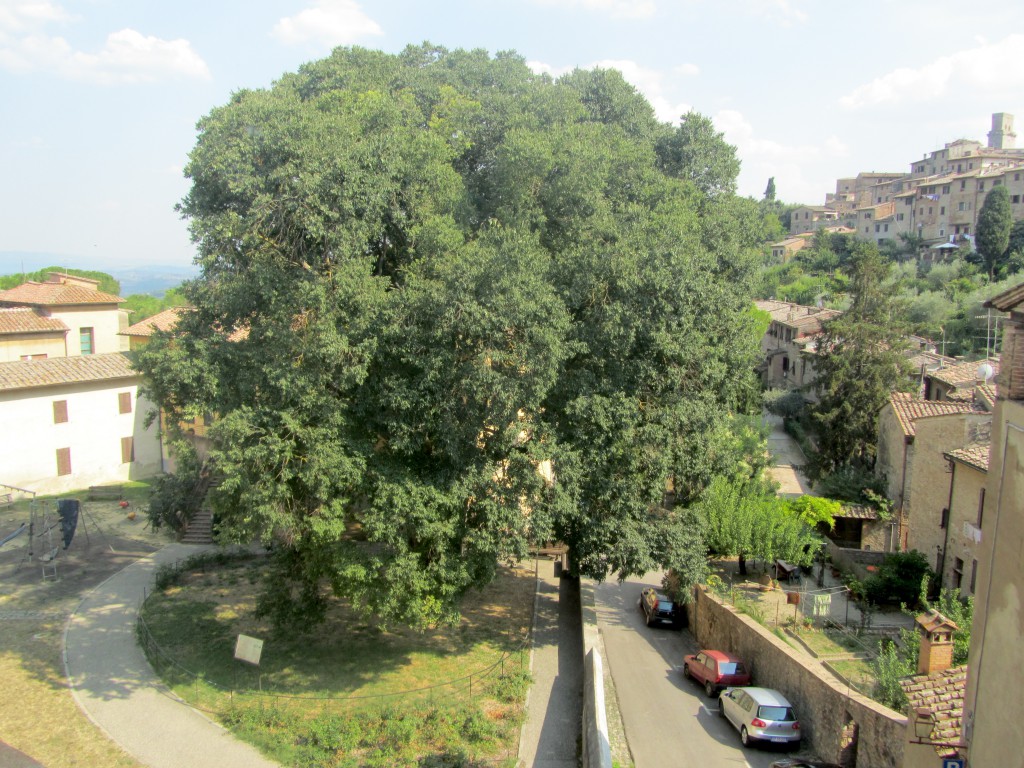
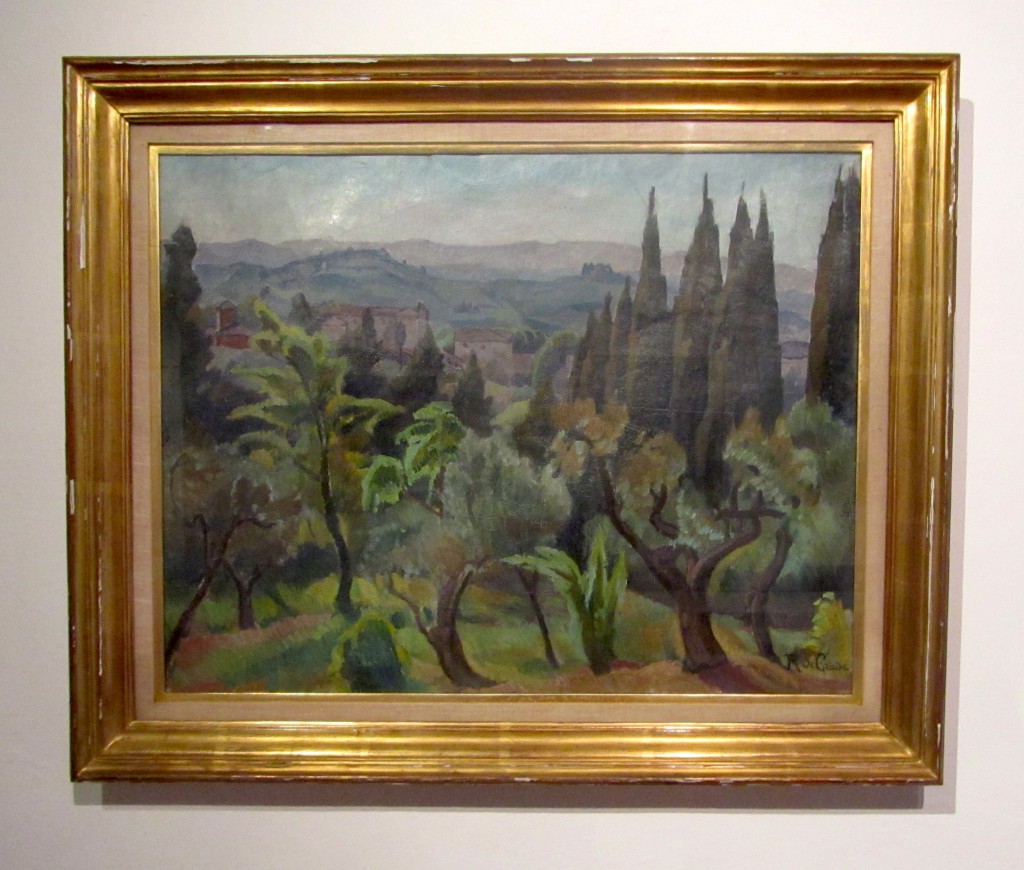
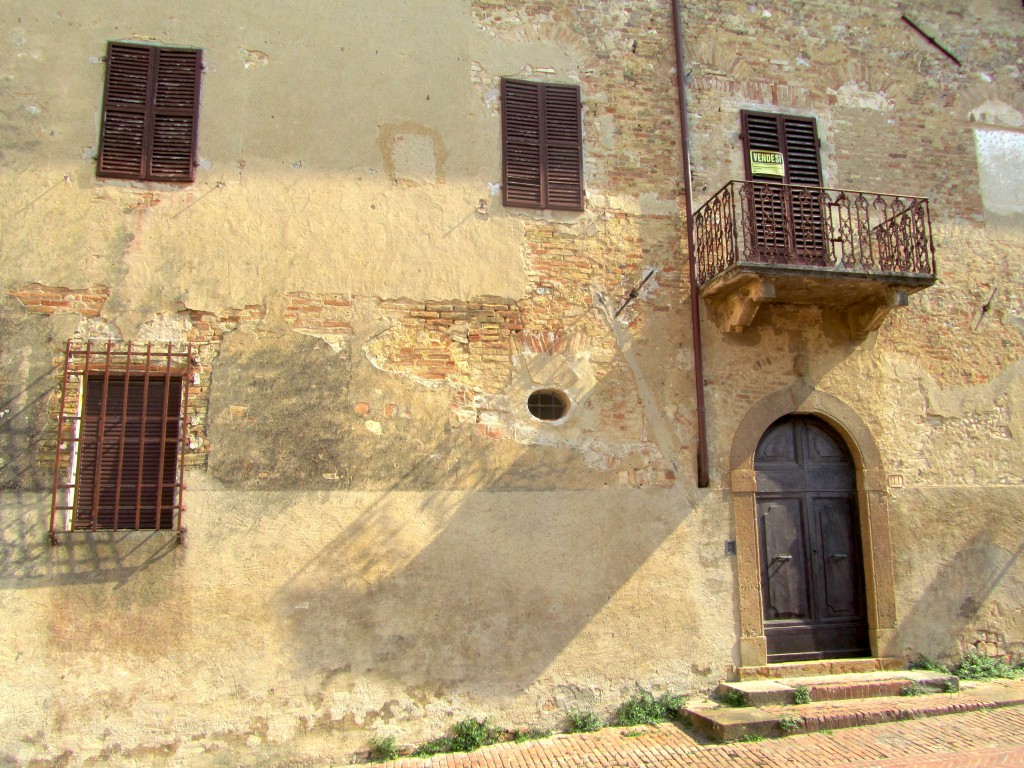
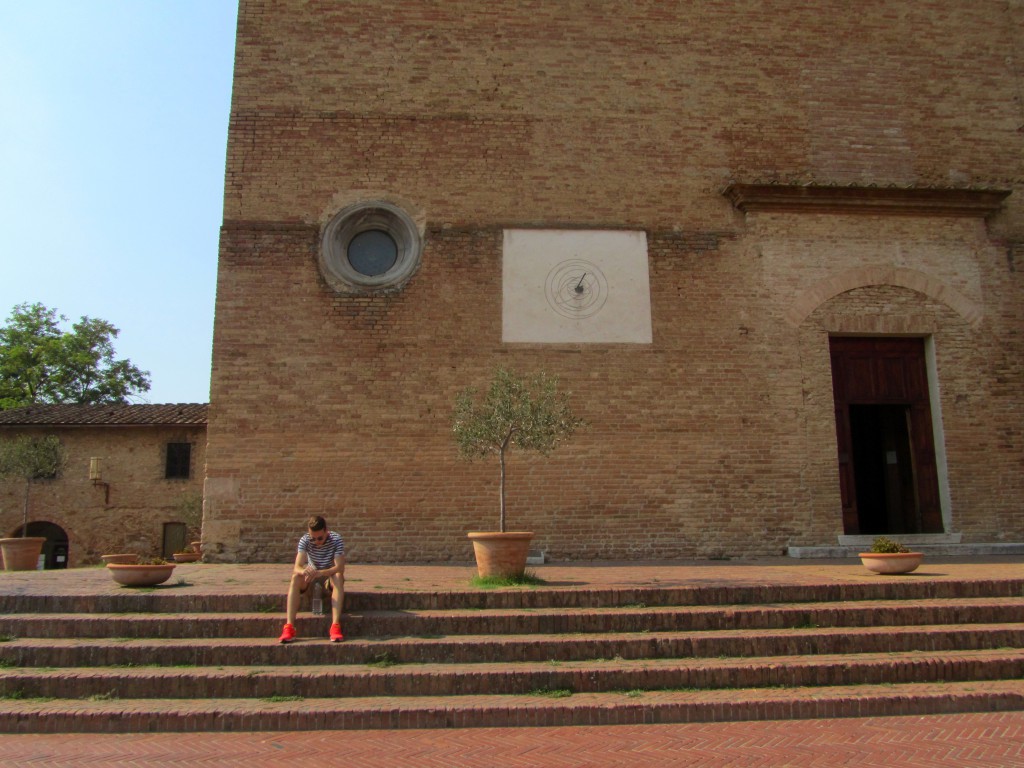
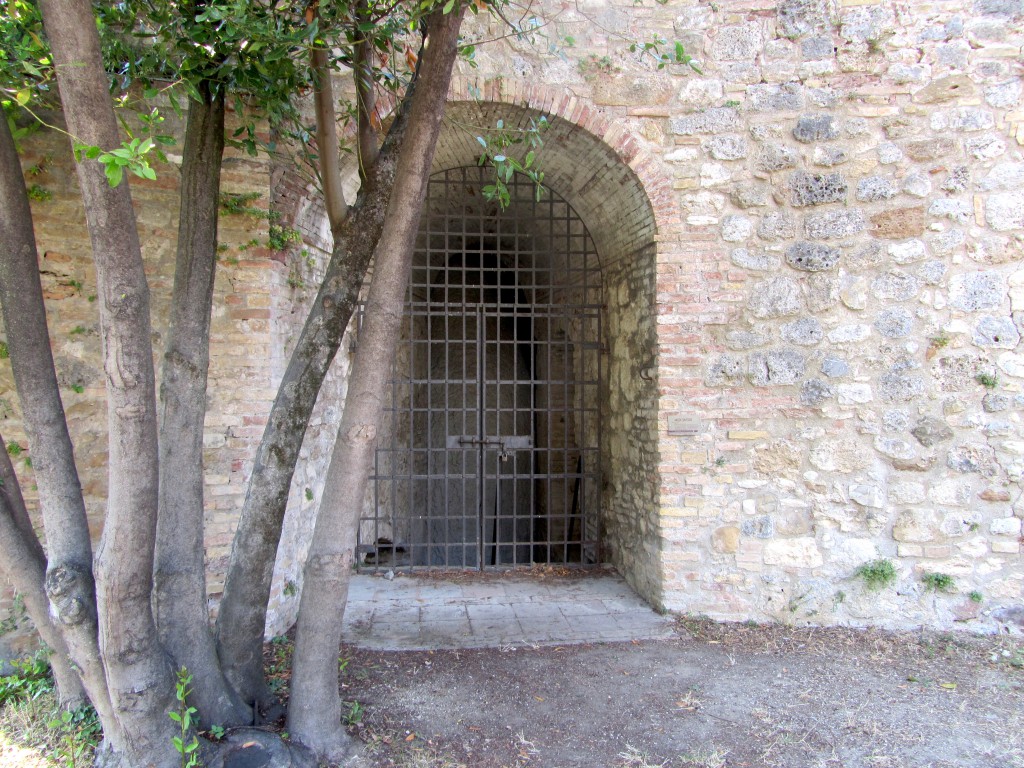
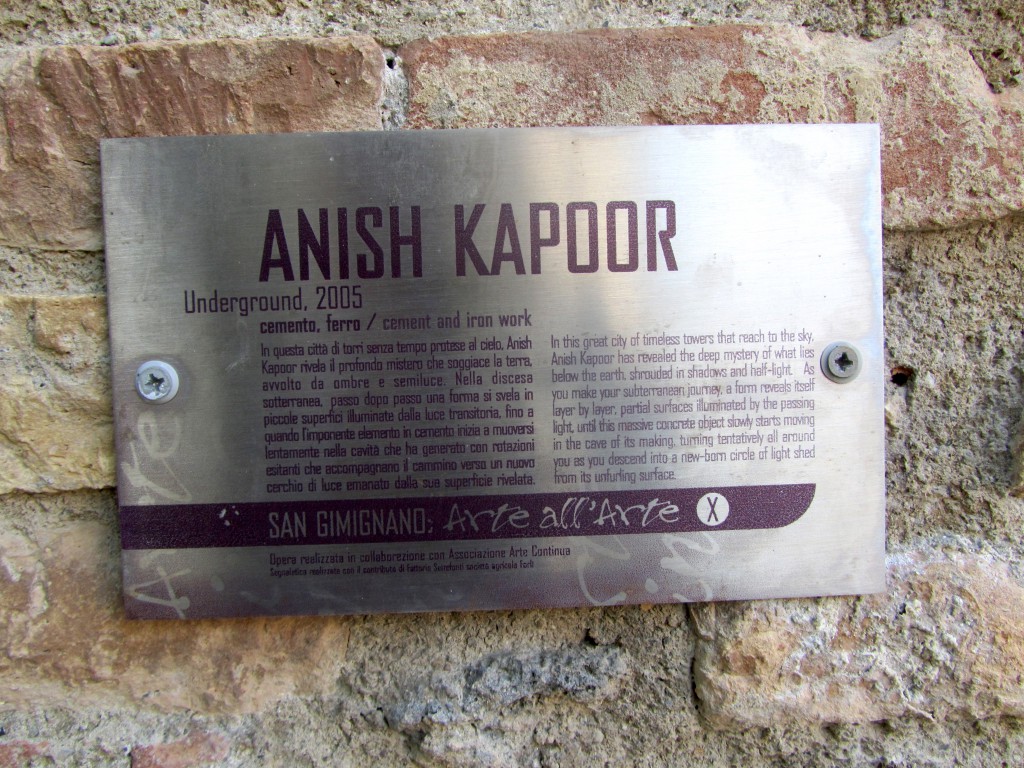
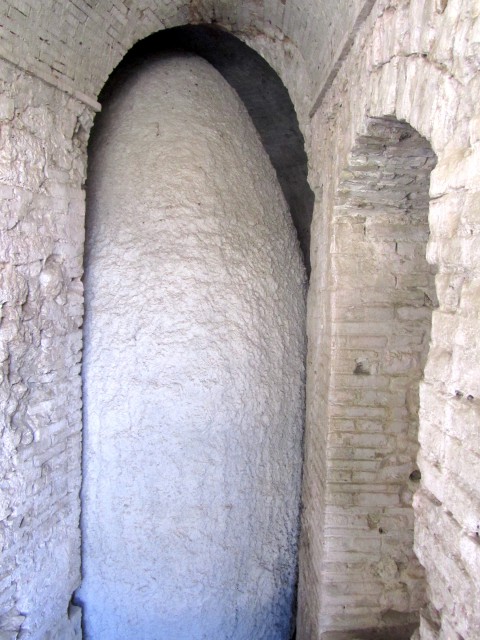
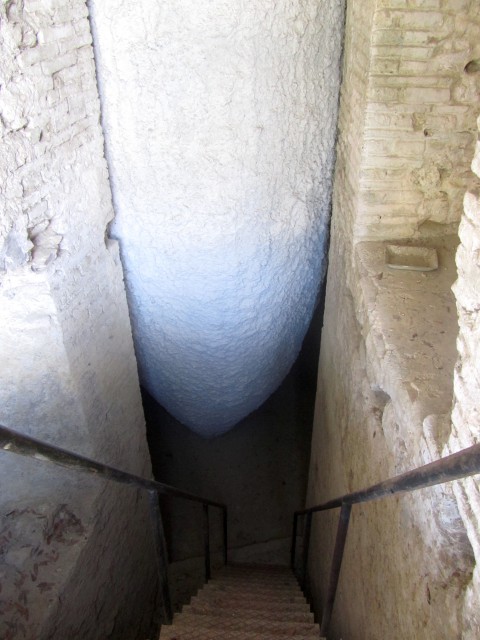
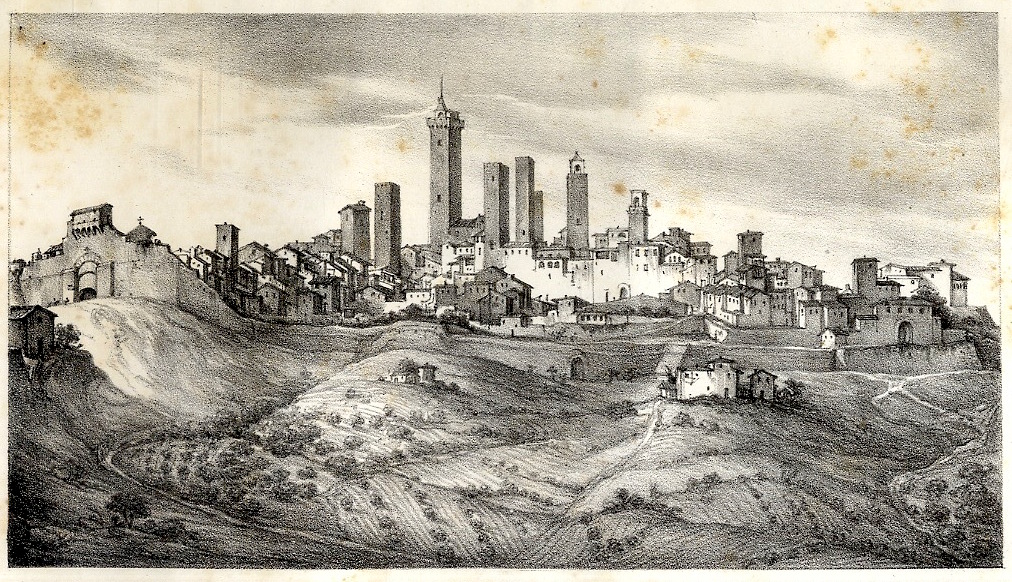
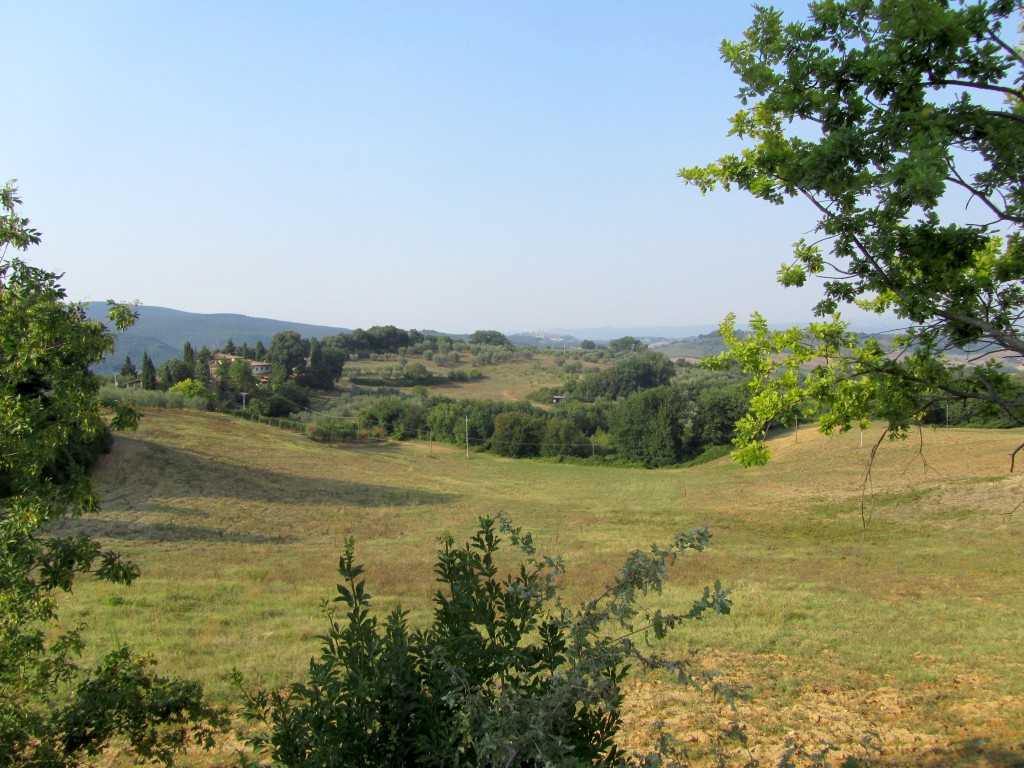
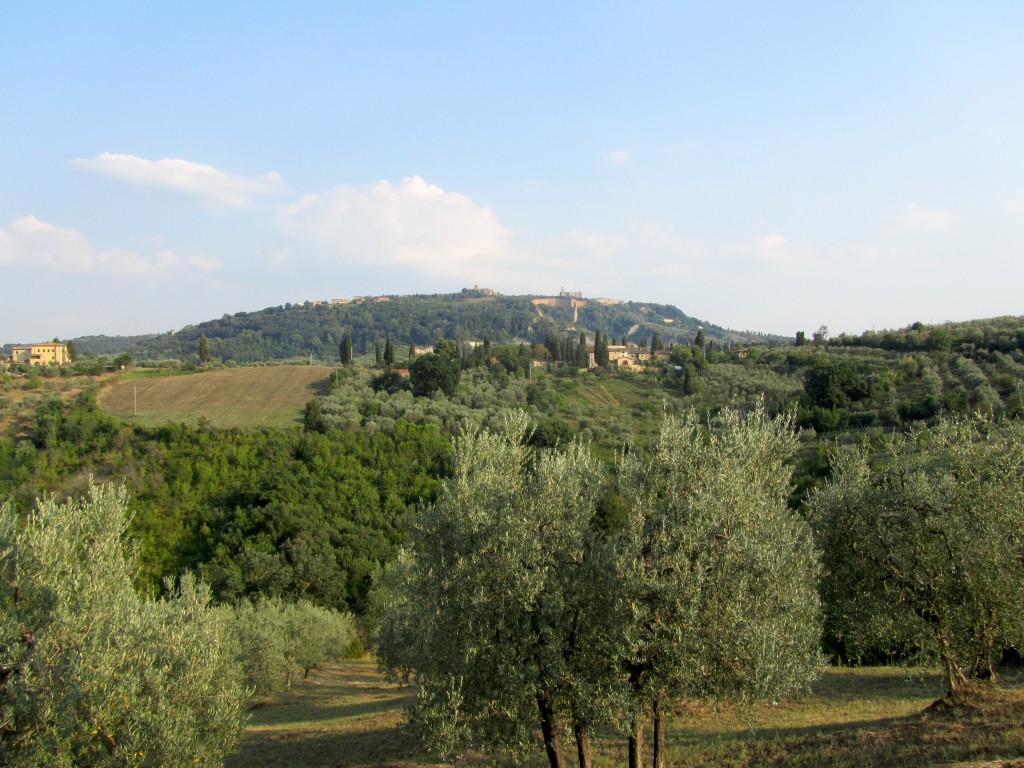


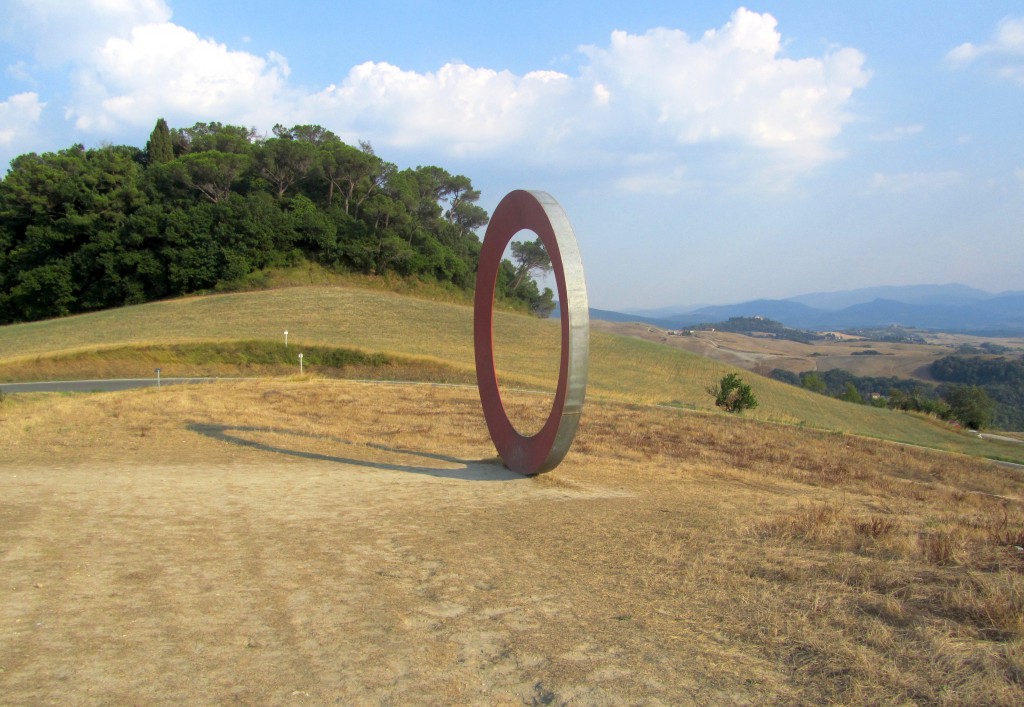
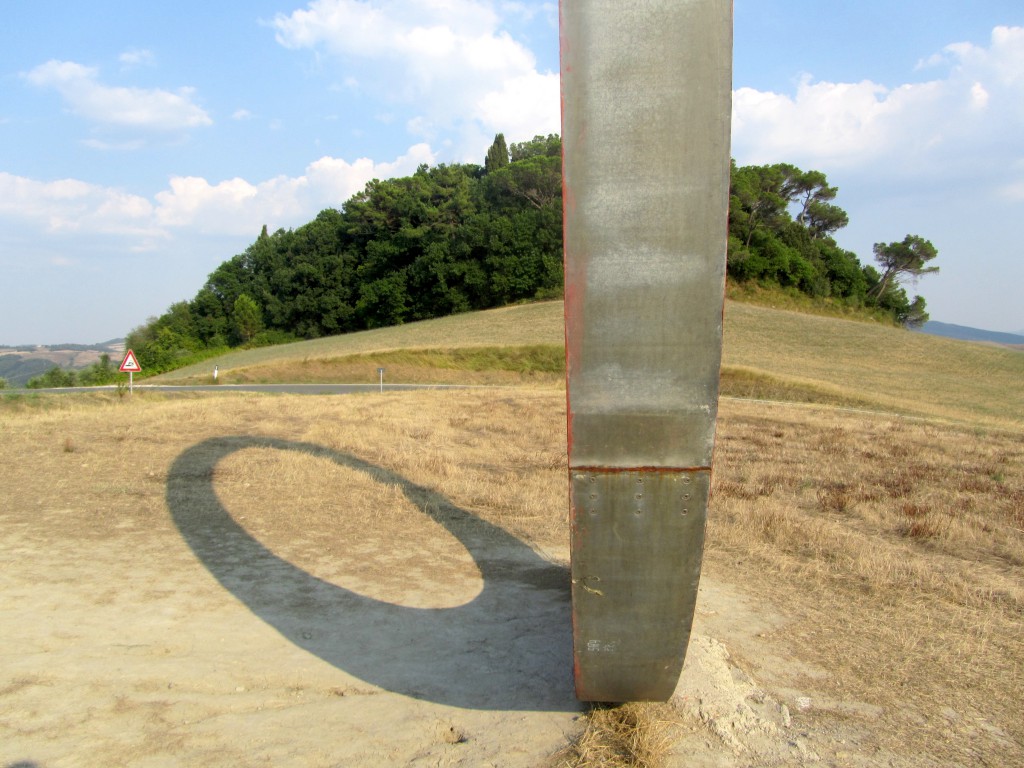
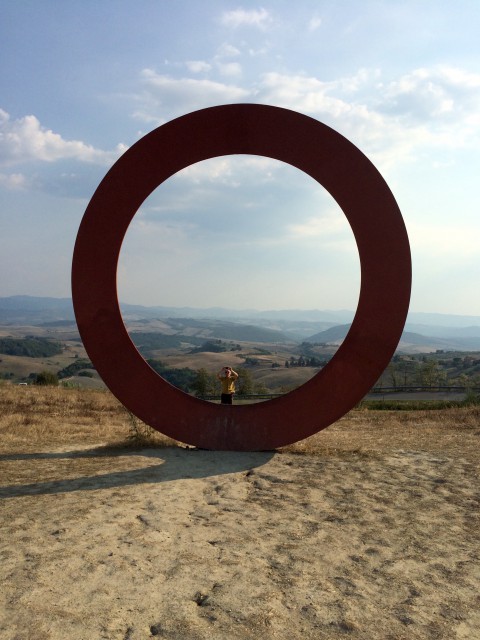
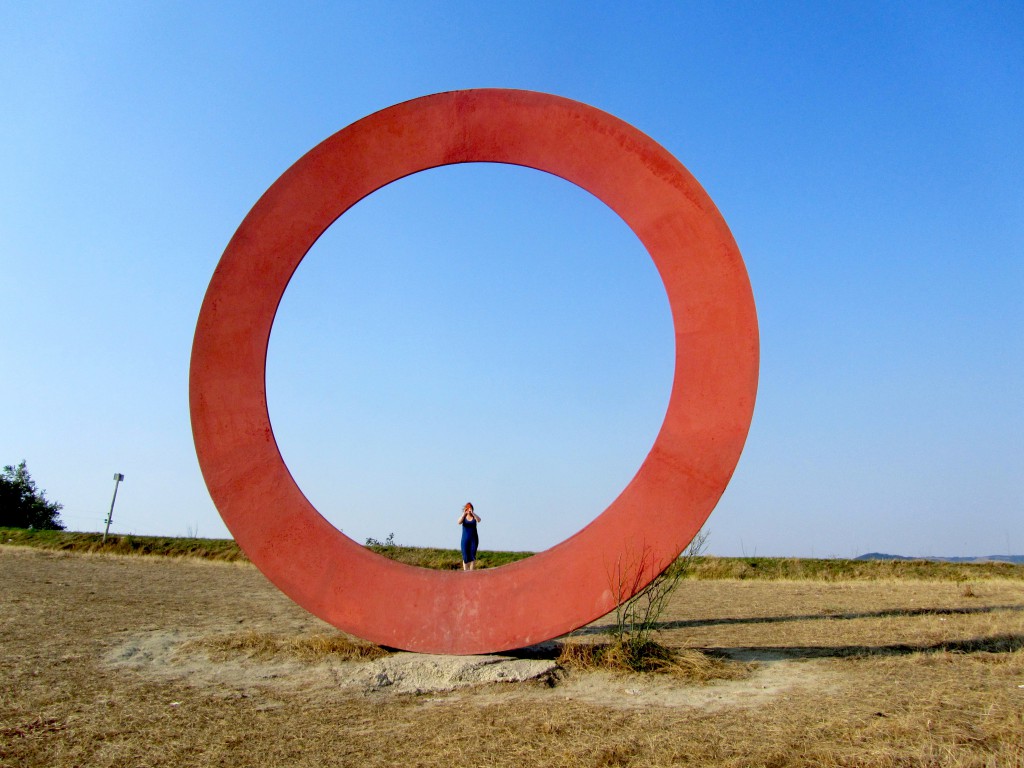
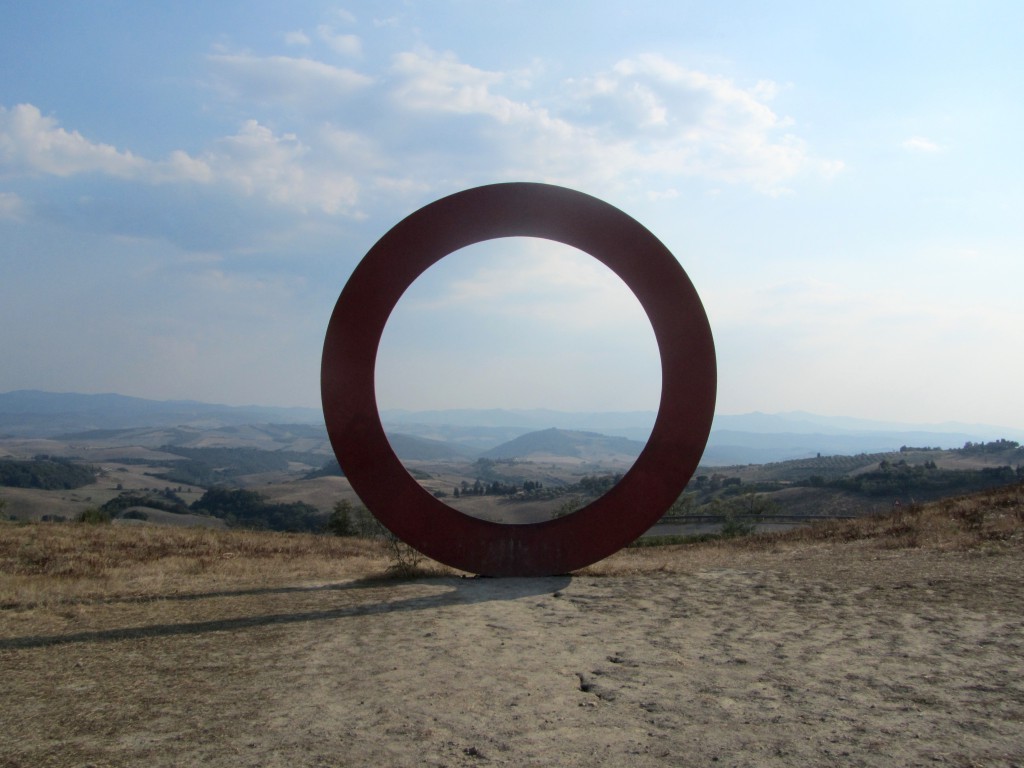
Thank you for the blog Chris, it brings my trip back . Thank you also for including my painting.
You’re welcome Paul. The Tuscan dusk is in our window.
Thanks for this blog Chris. Over 20 years ago, thinking we were heading to Siena, we ended up in San Gimignano. I’m not sure exactly how that happened since they aren’t really that close to each other. We missed all the art work you talked about (it was nice to see it second hand) but we had the best gelato in all of Italy. That’s what I remember – the Piazza della Cisterna (where we stayed), the towers, the views and the gelato.
Nice to hear from you Paula. They’re still queuing in Piazza della Cisterna for “the best gelato in all of Italy” so we got a pretty good alternative down by the San Giovanni gate.
Beautiful. Thanks for sharing the sights with us, and for the history lesson.
I was unfamiliar with the Cinta Senese breed of hogs. I thought it was a Hampshire (there is a close resemblance). I hope you had the chance to try it.
Cheers Bill, thanks for looking. The Cinta Senese was on the endangered list, almost extinct until recently. We didn’t try it, but maybe next time.